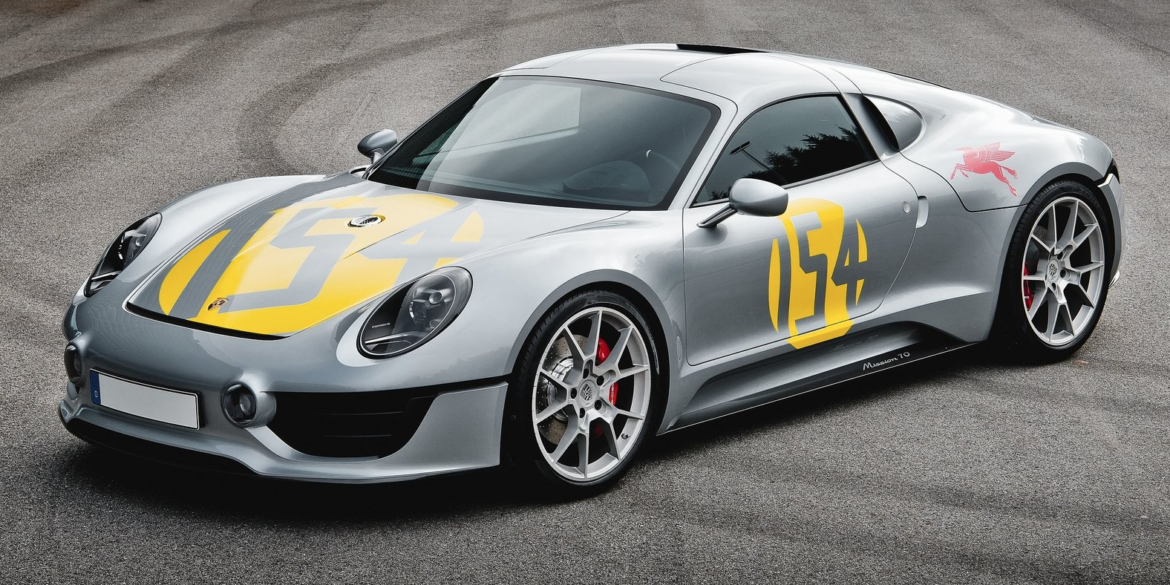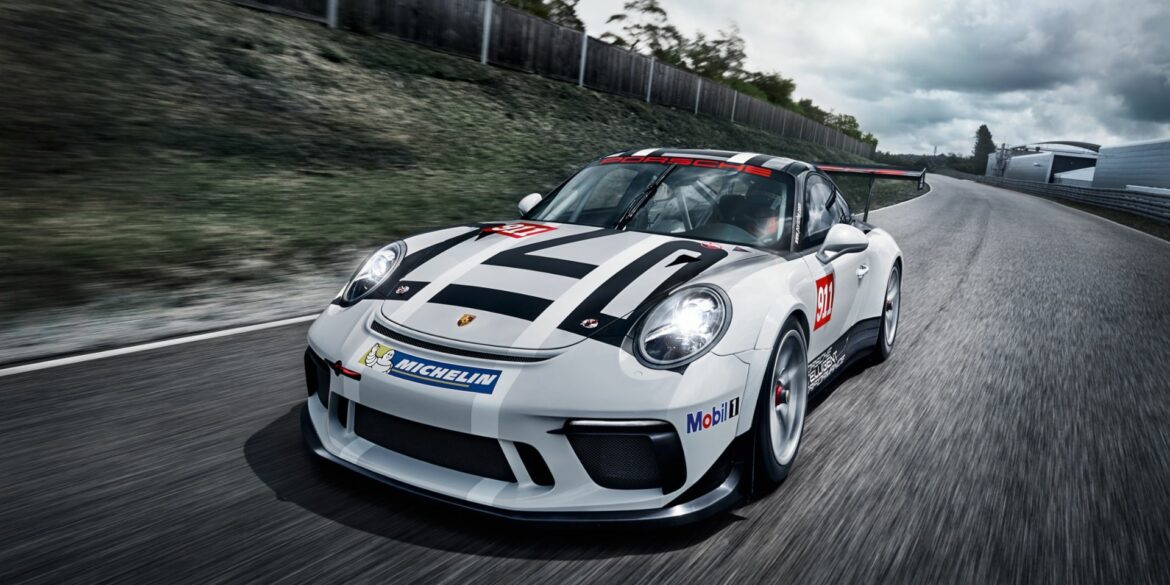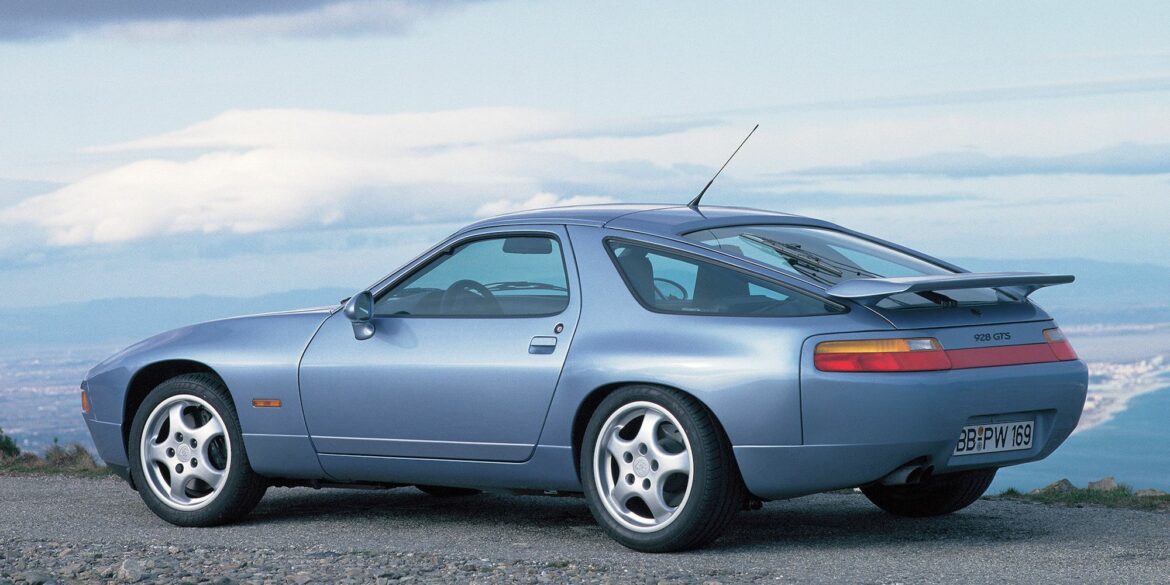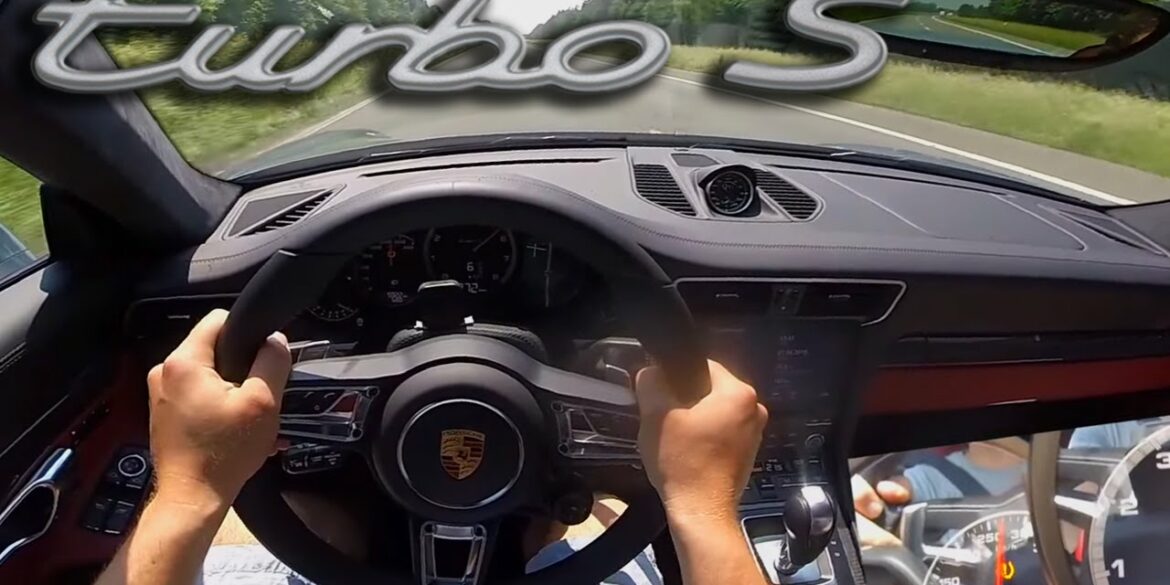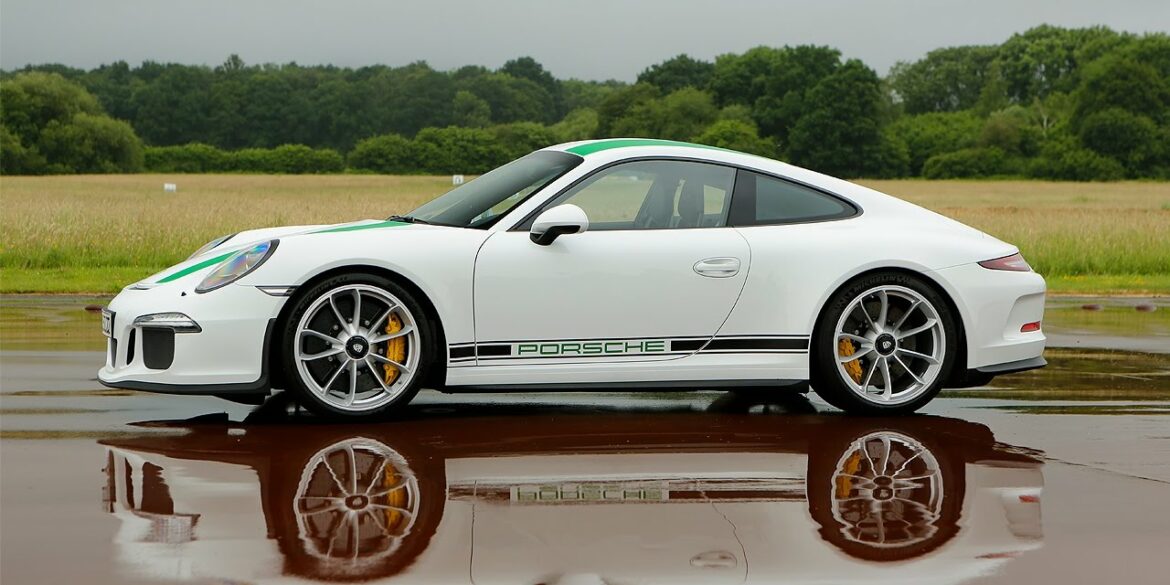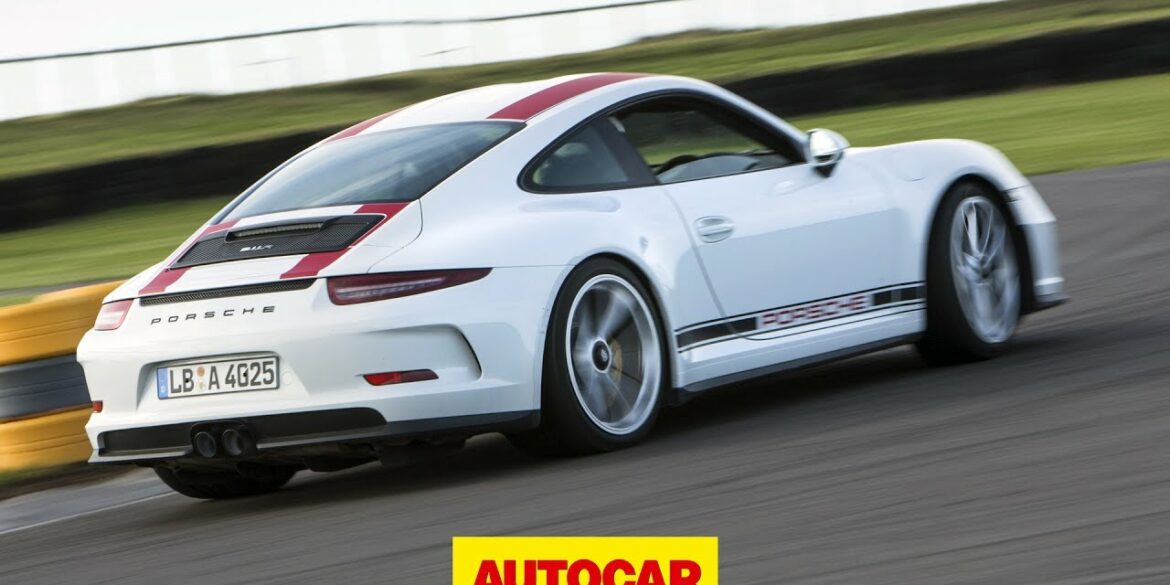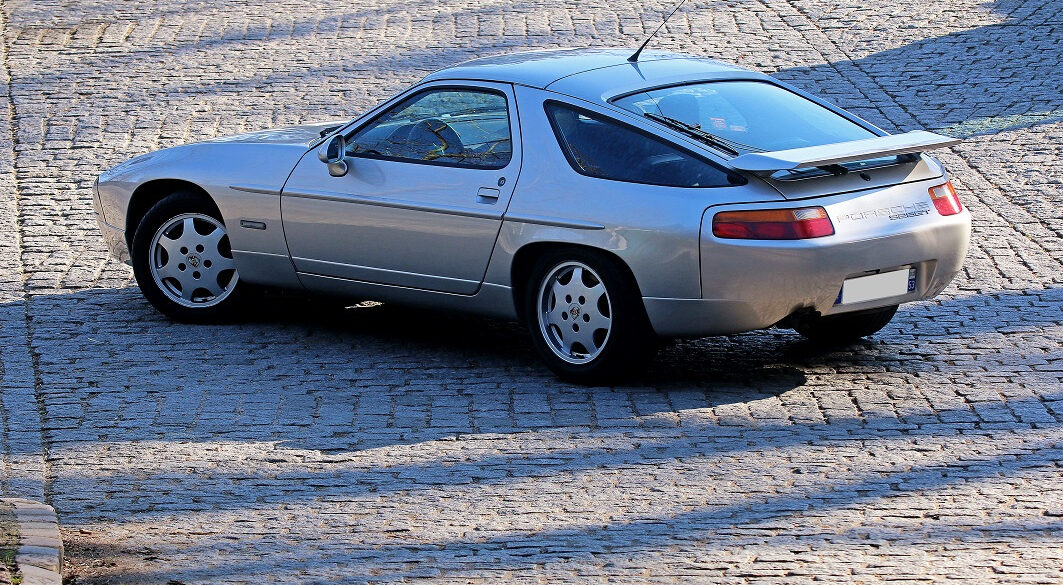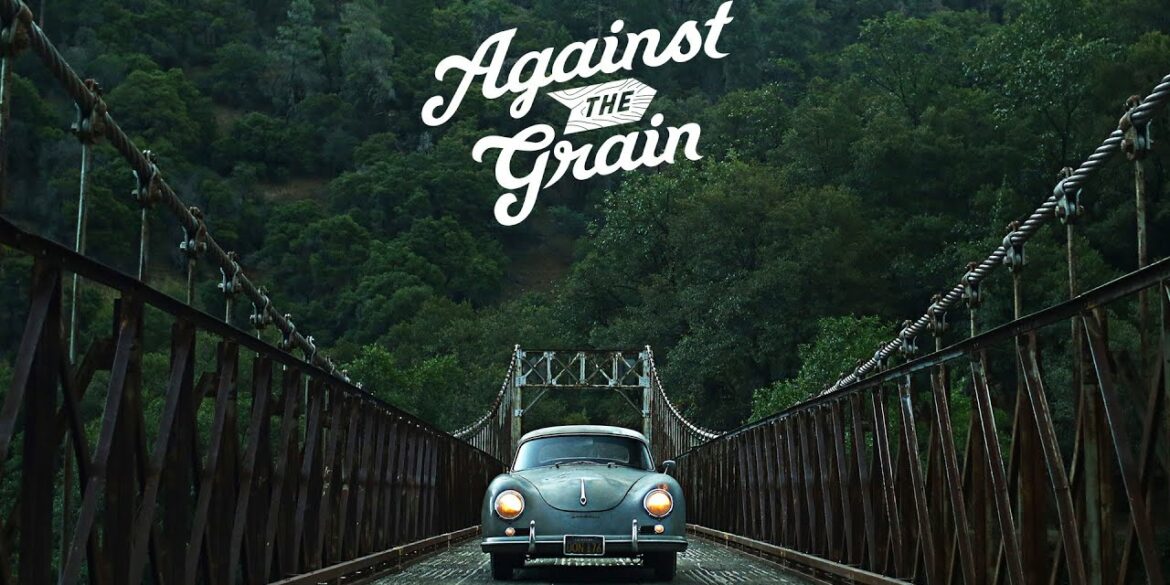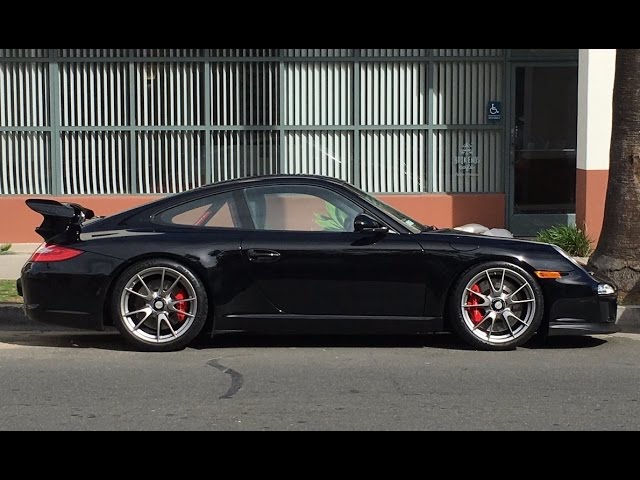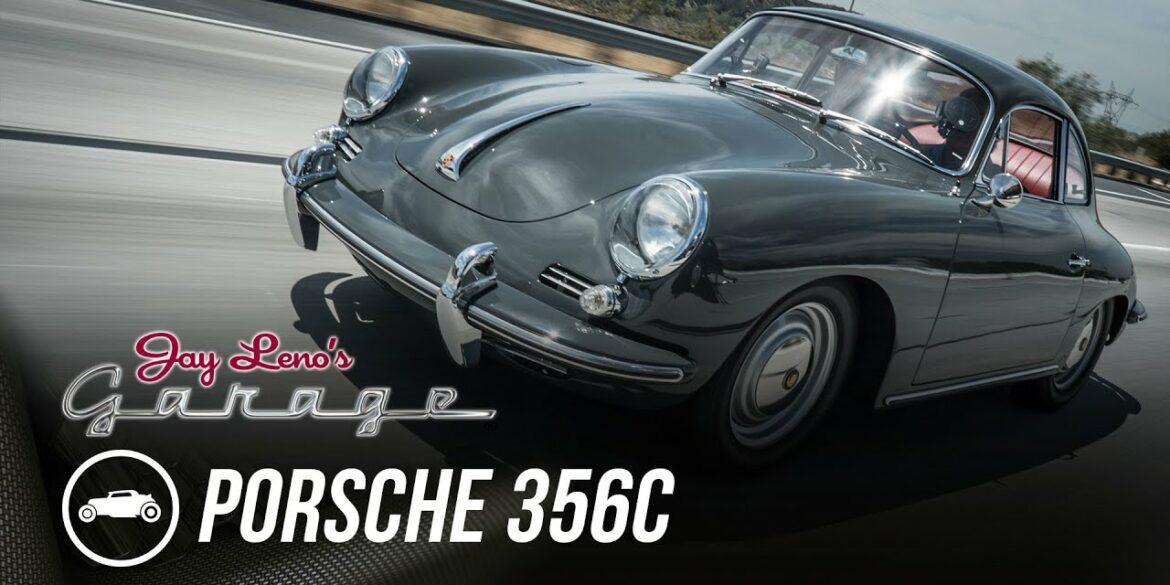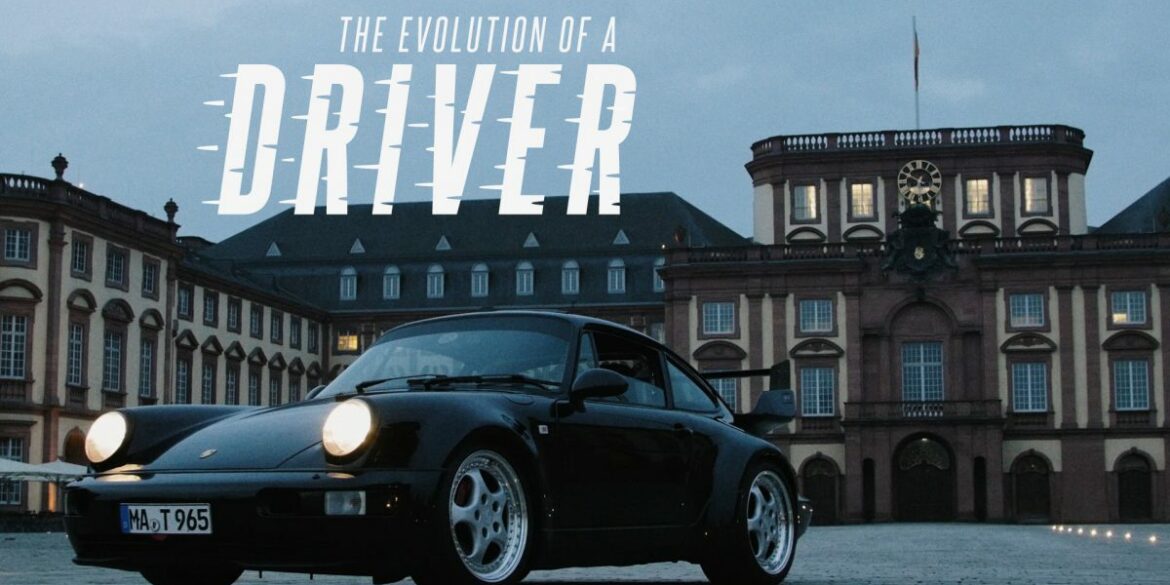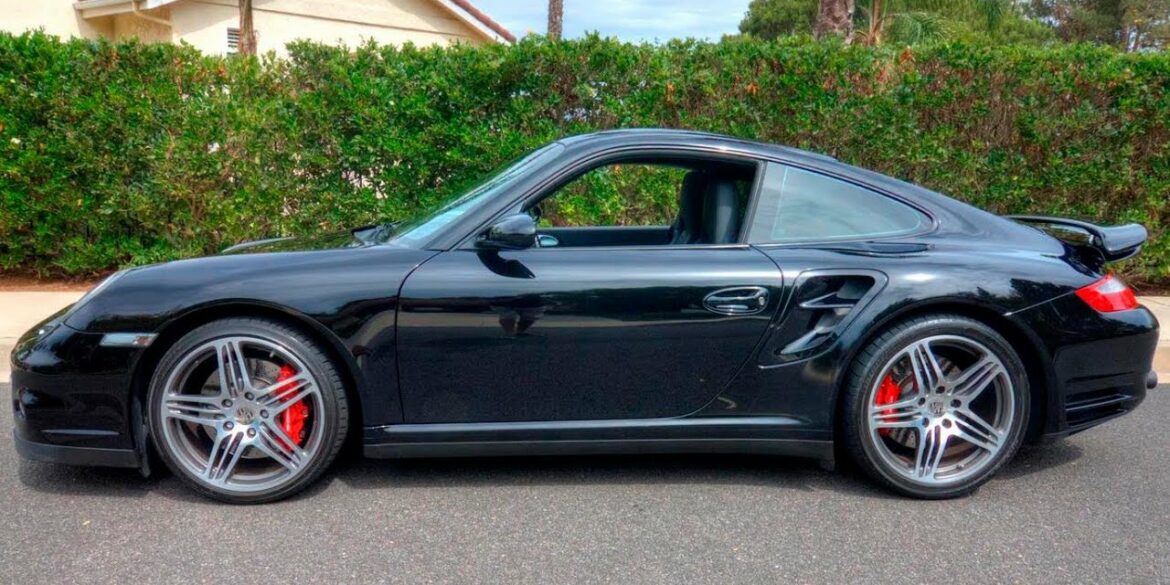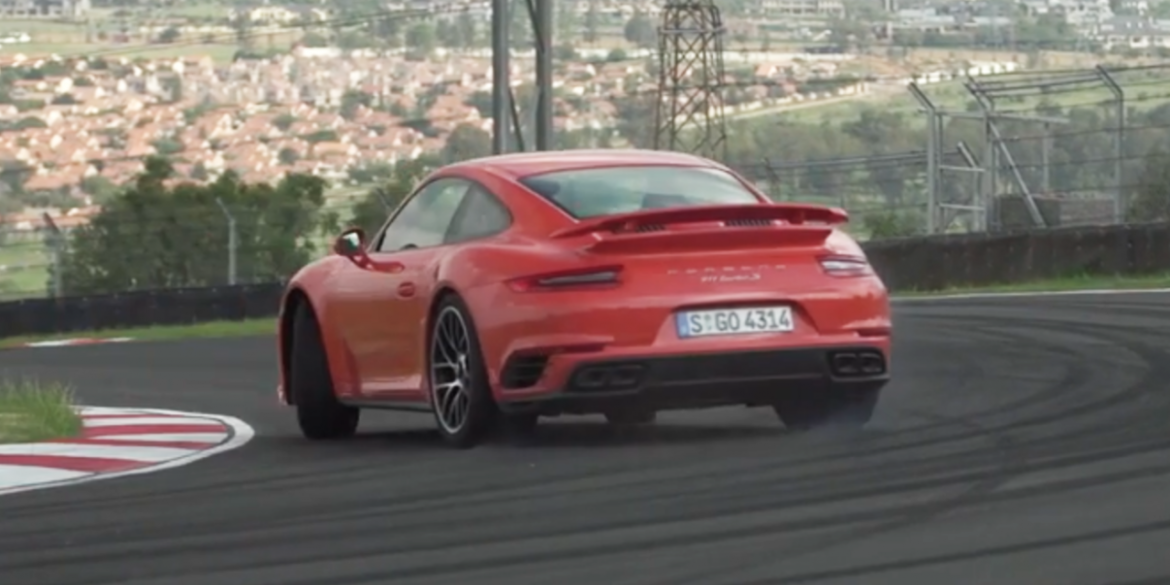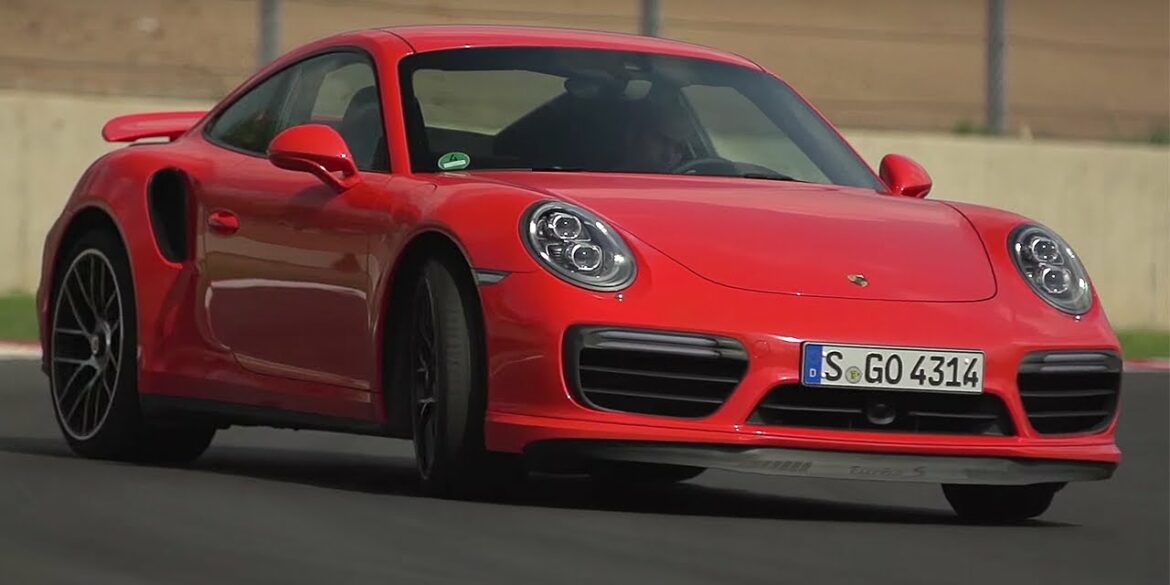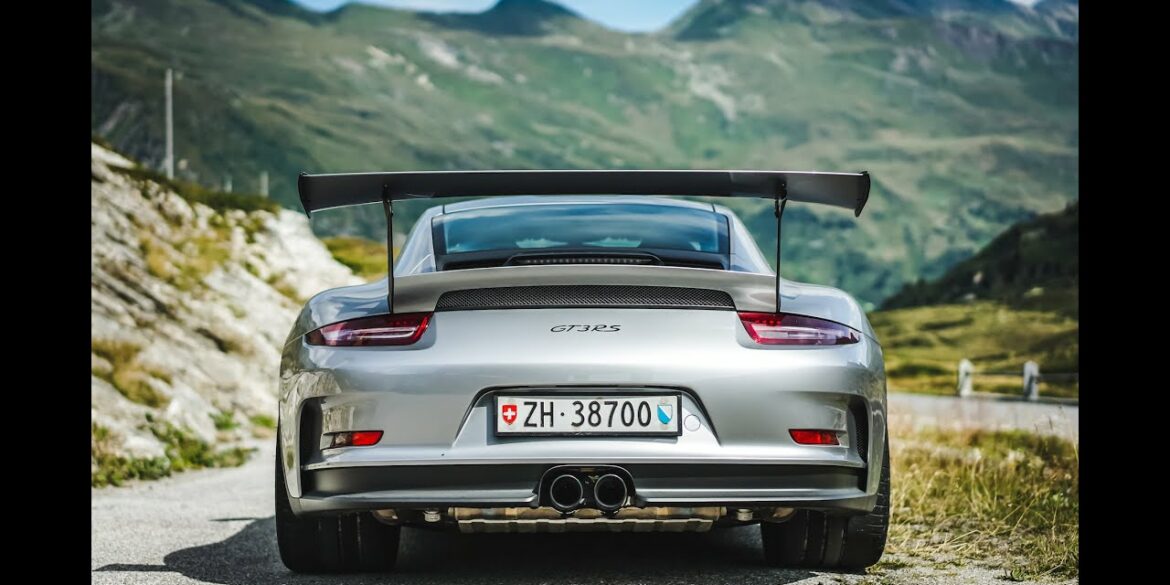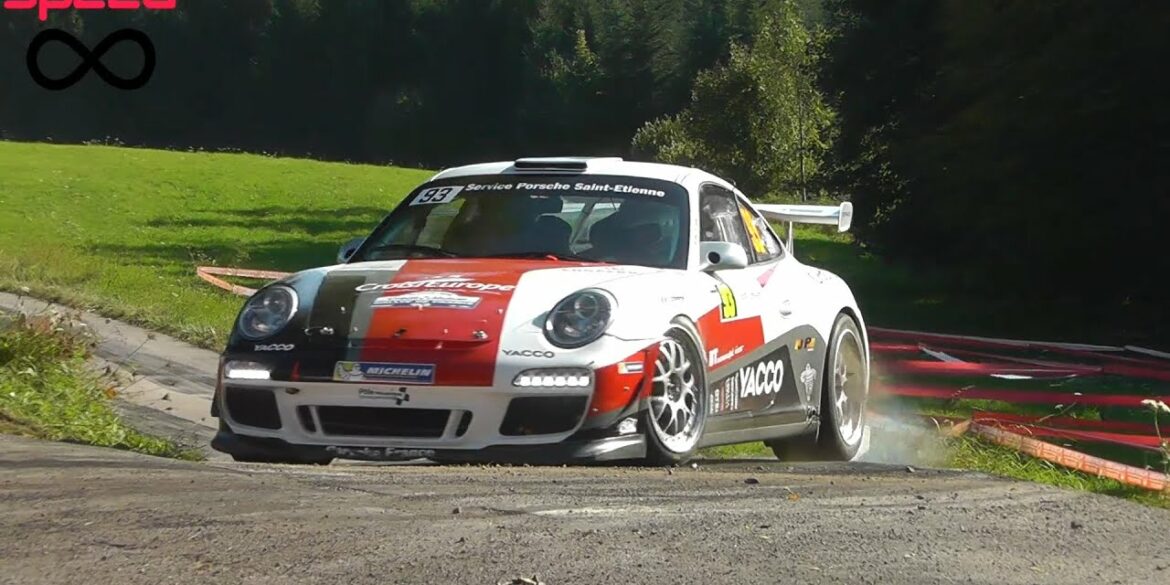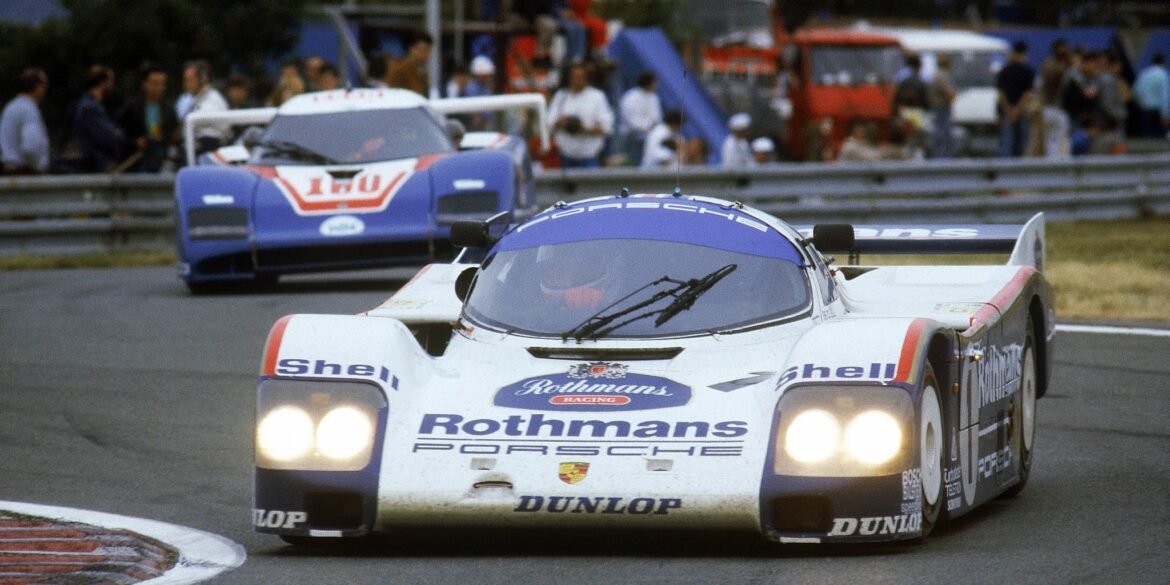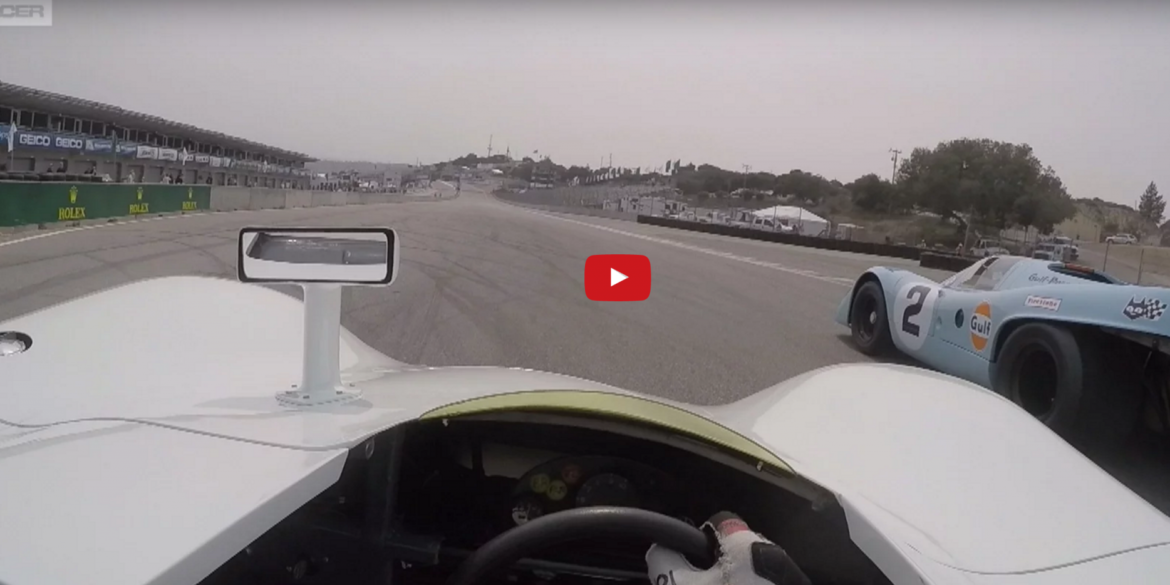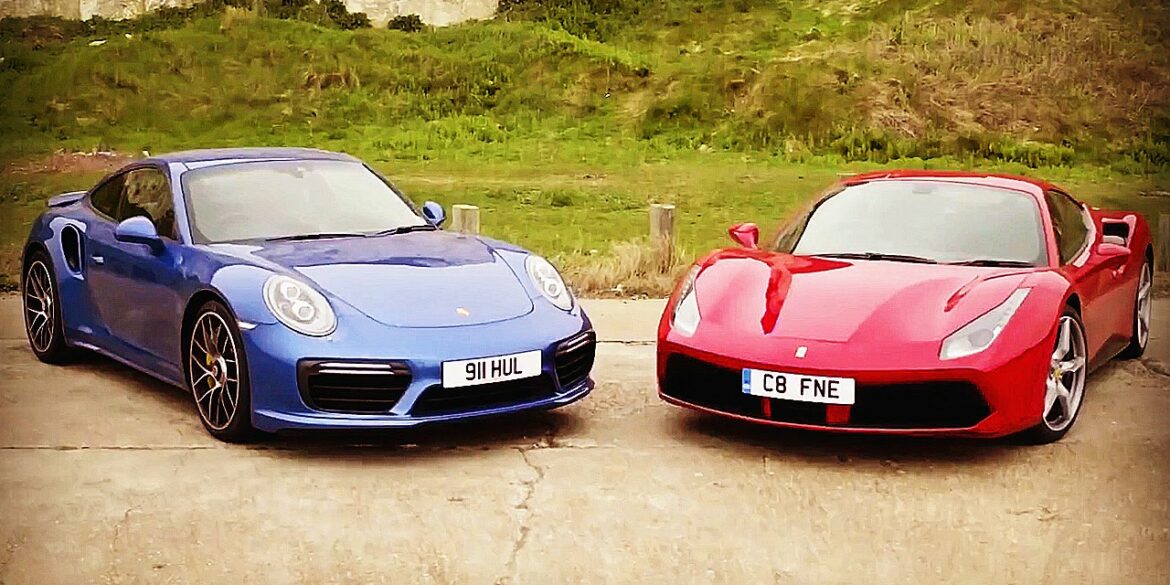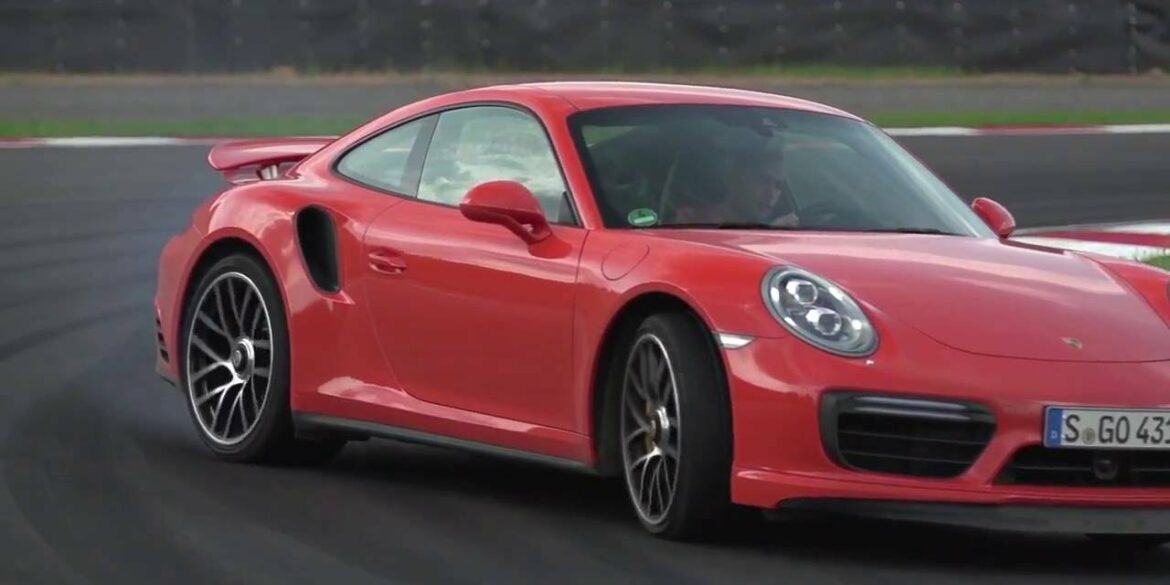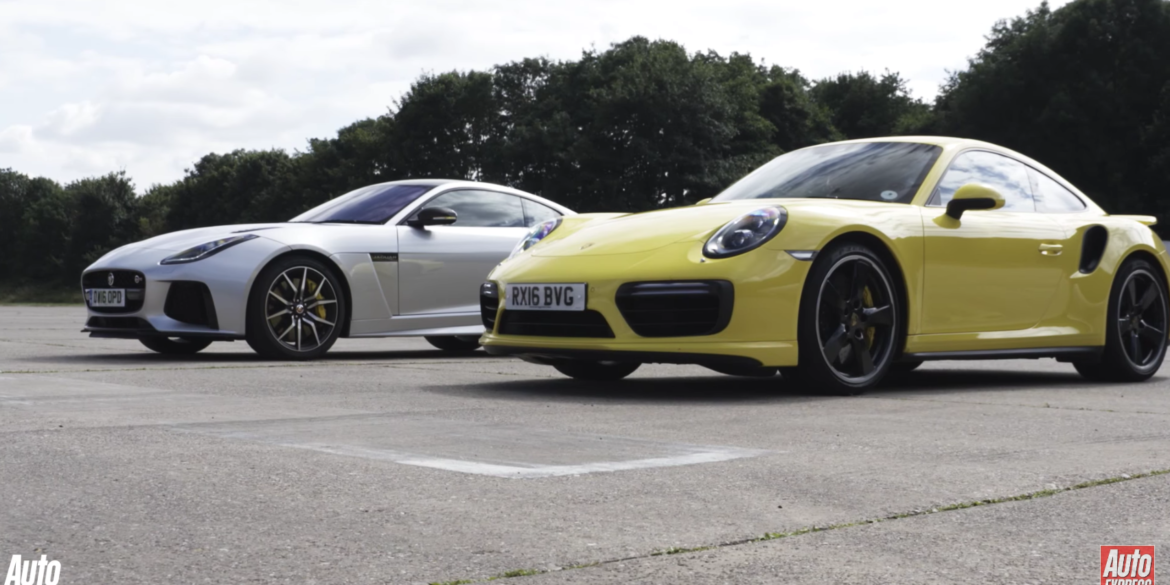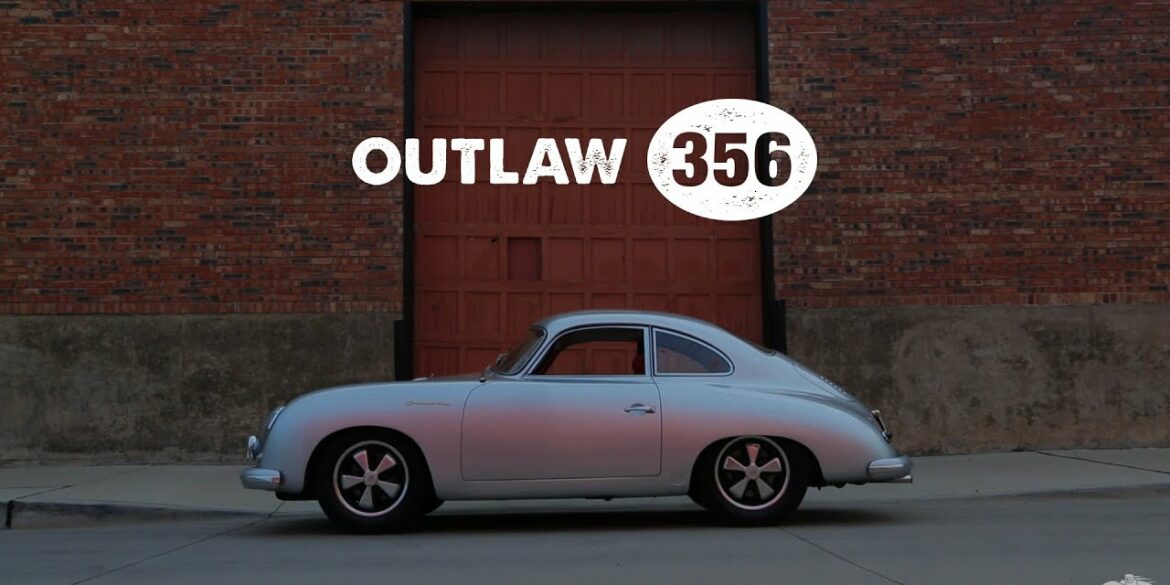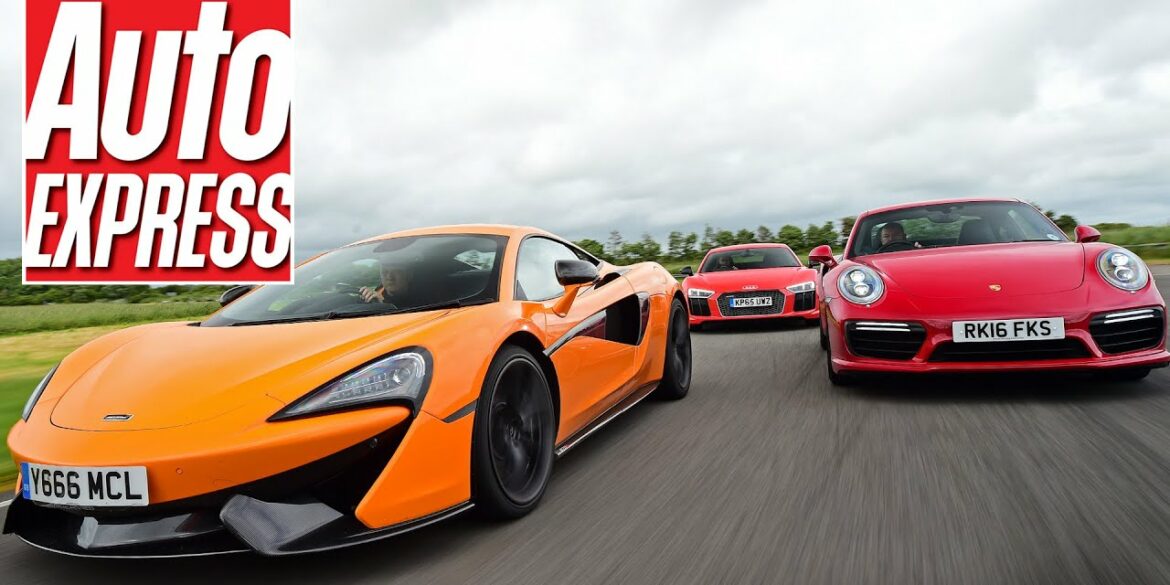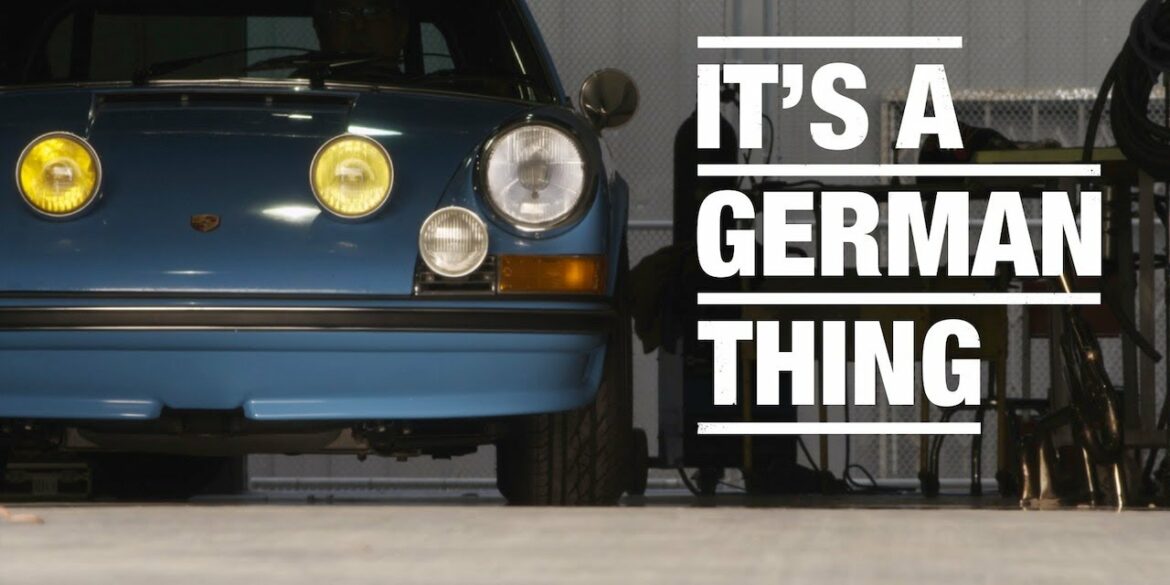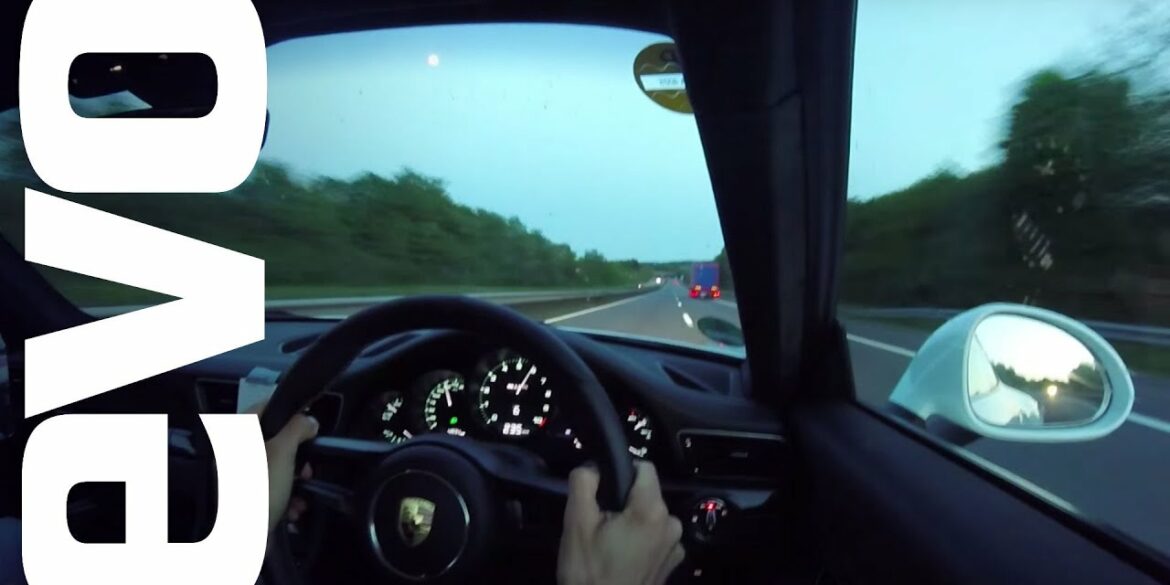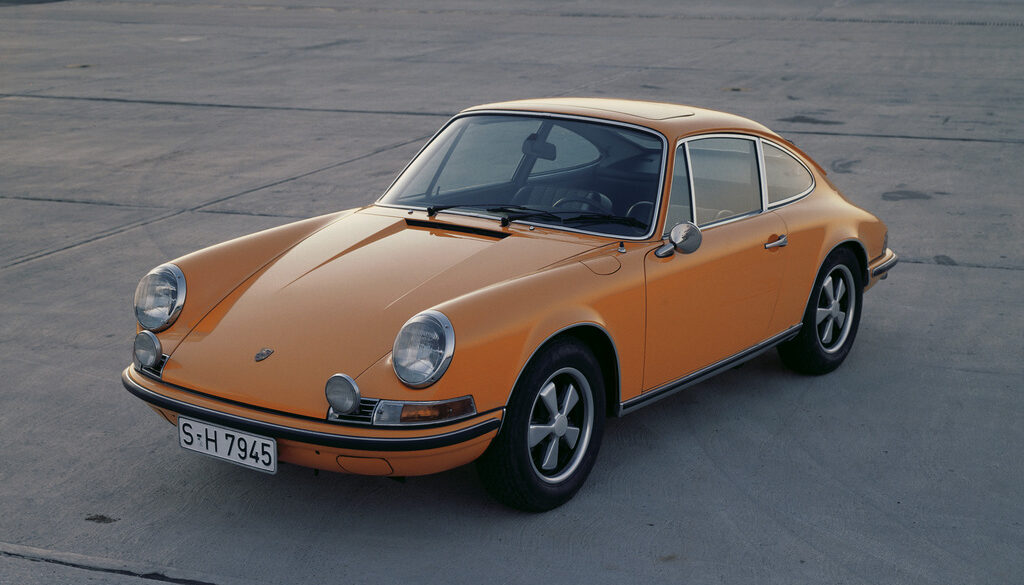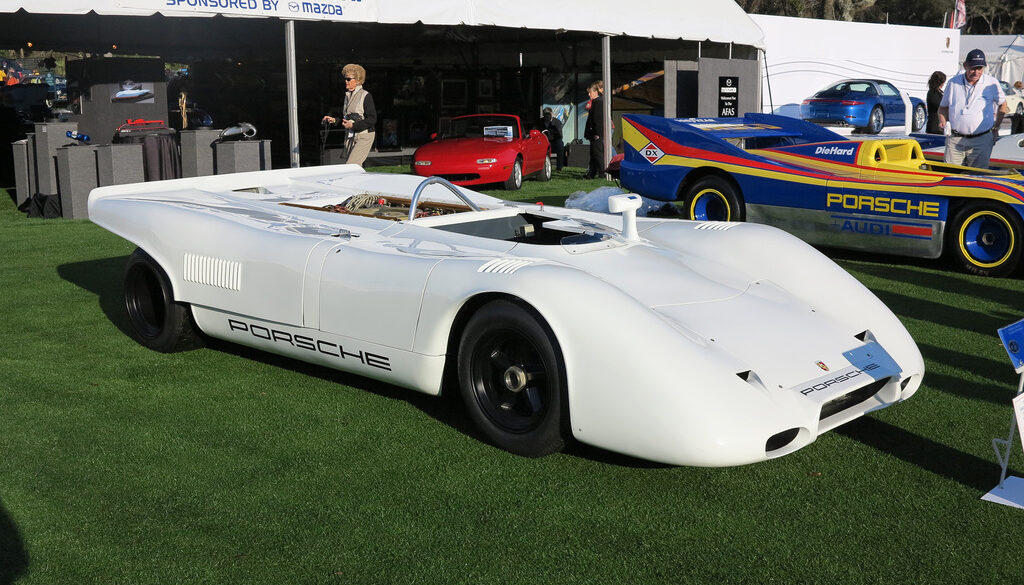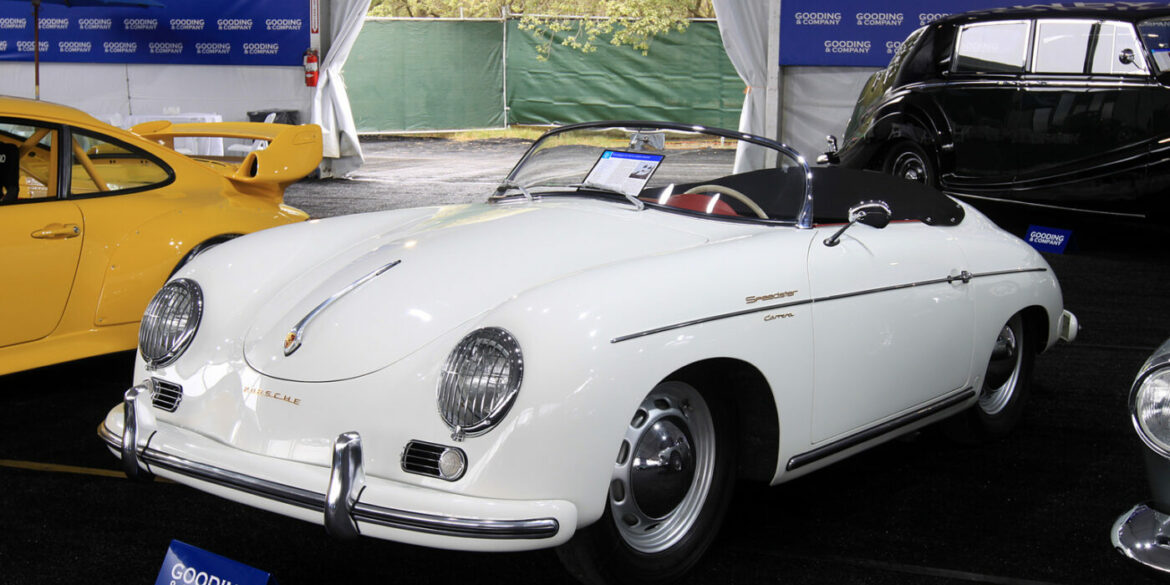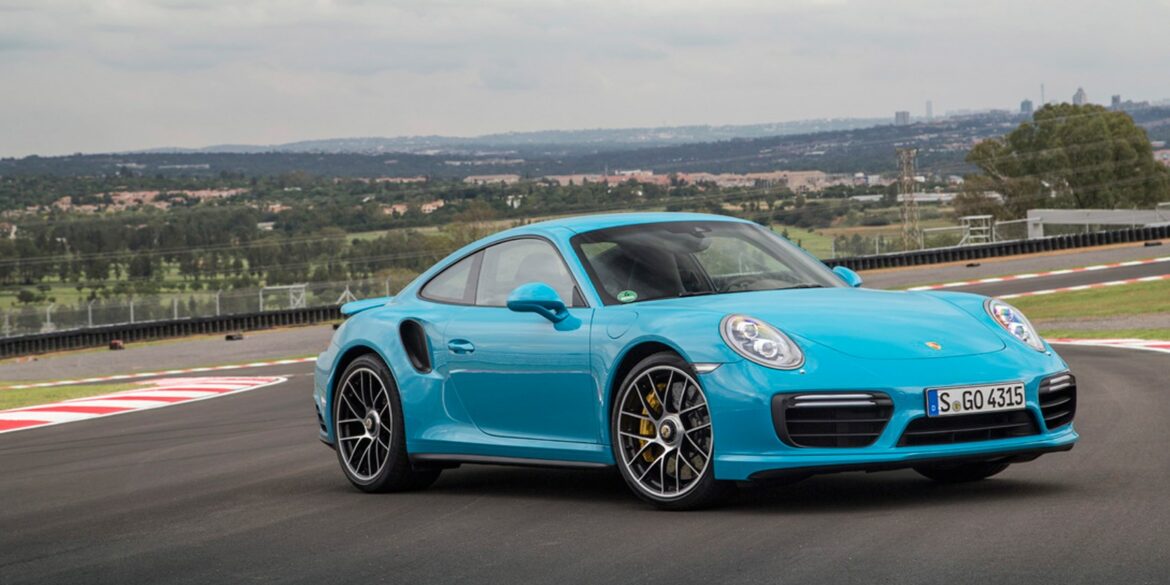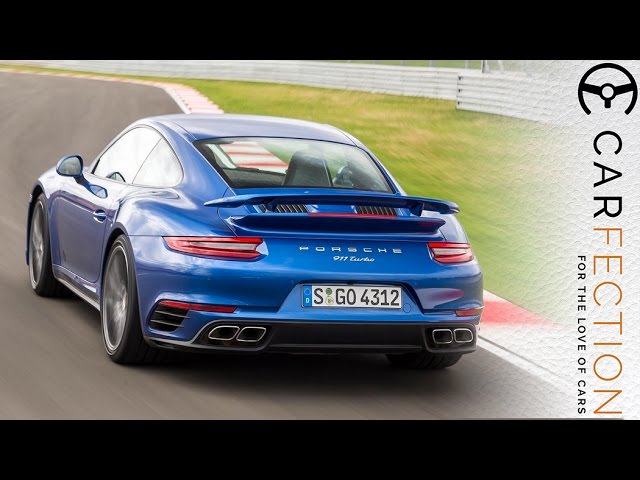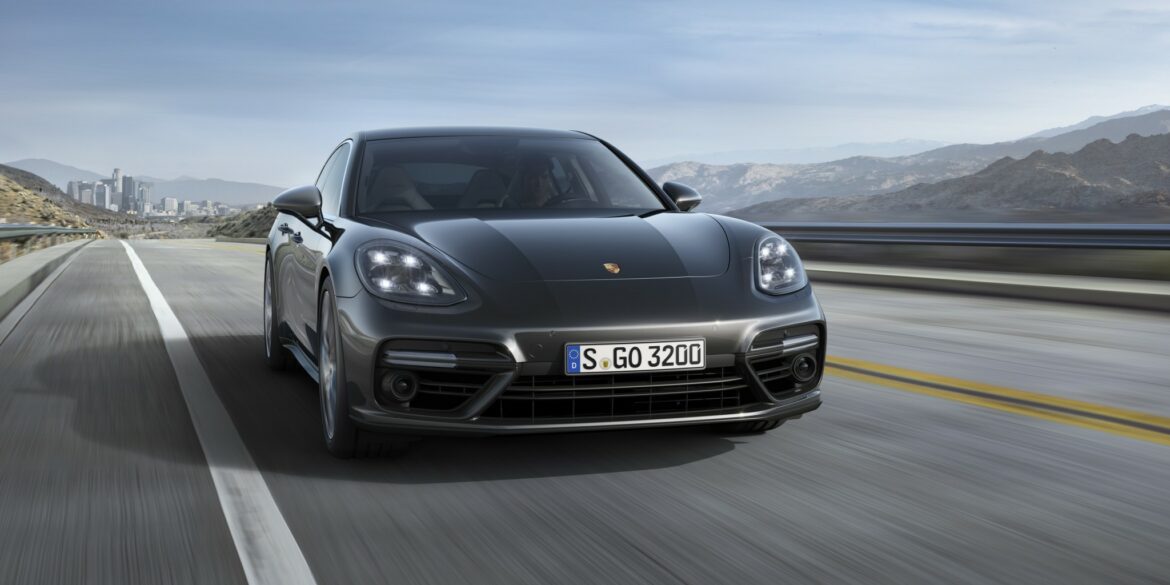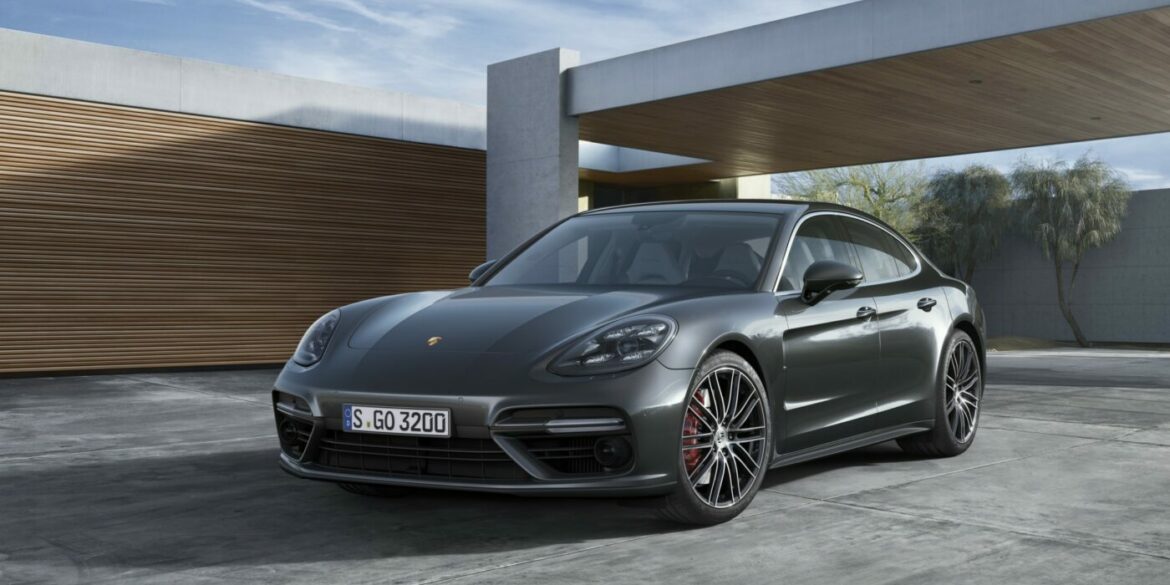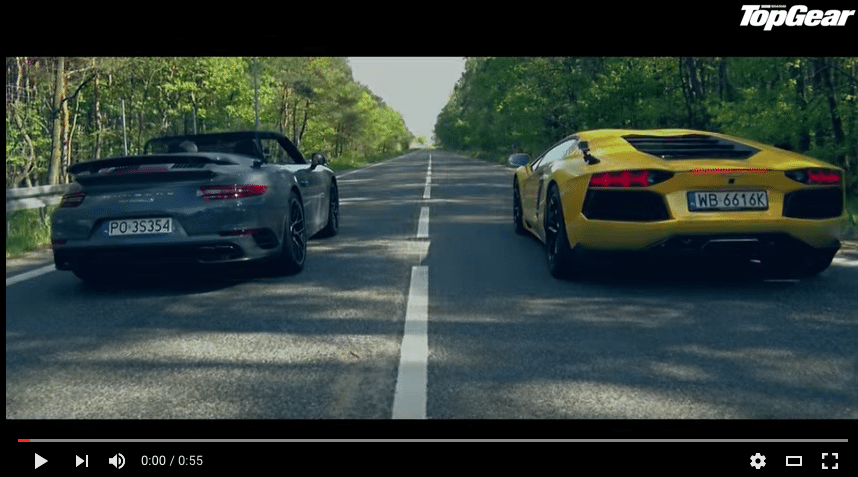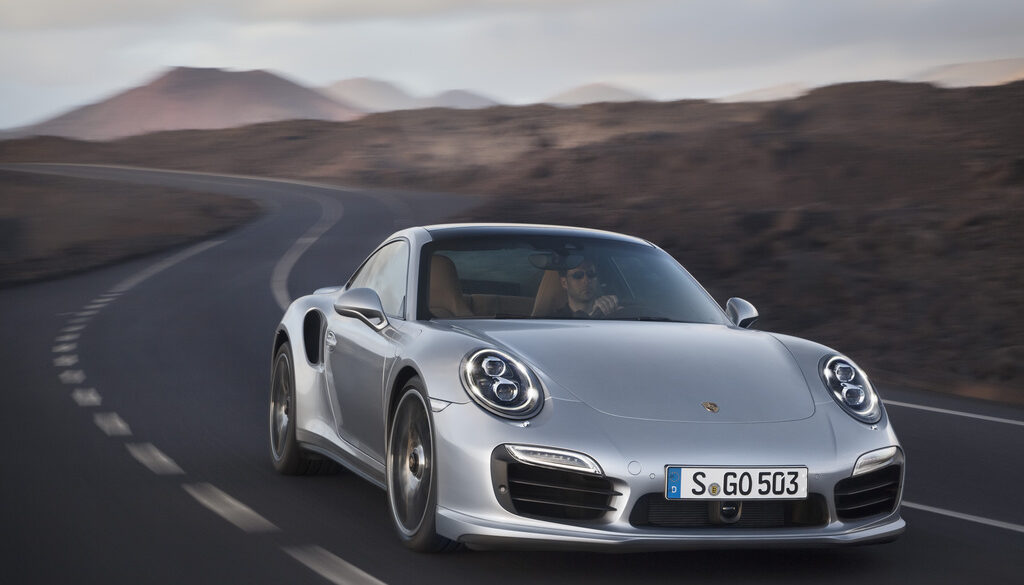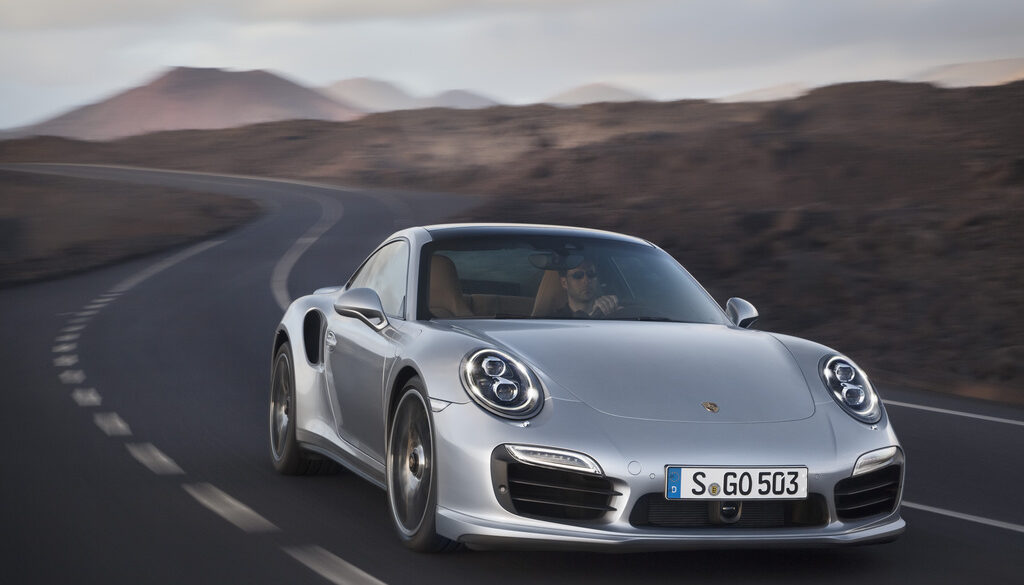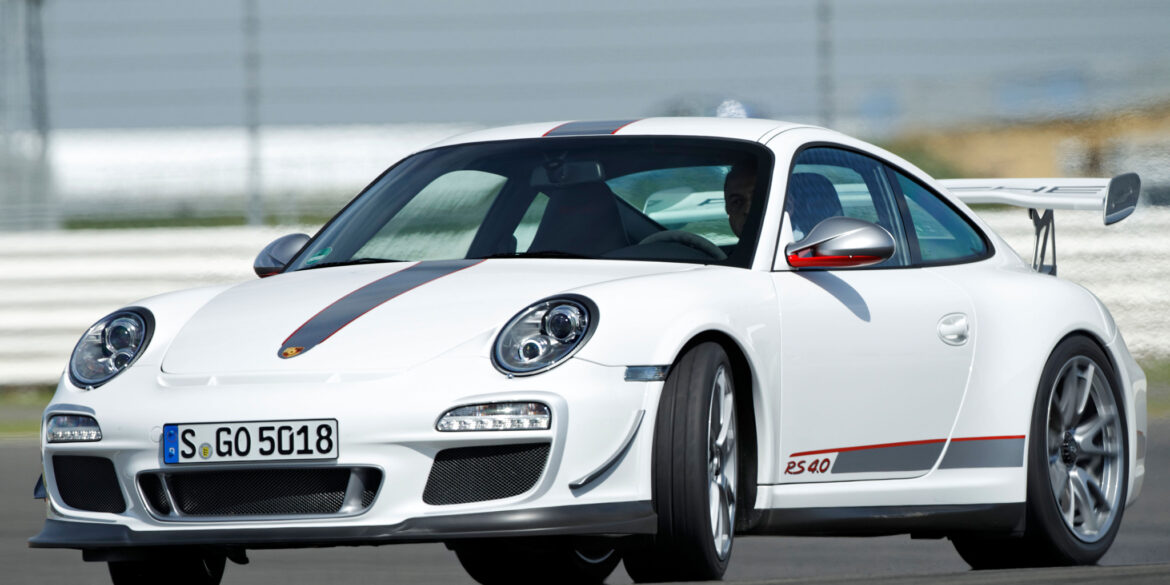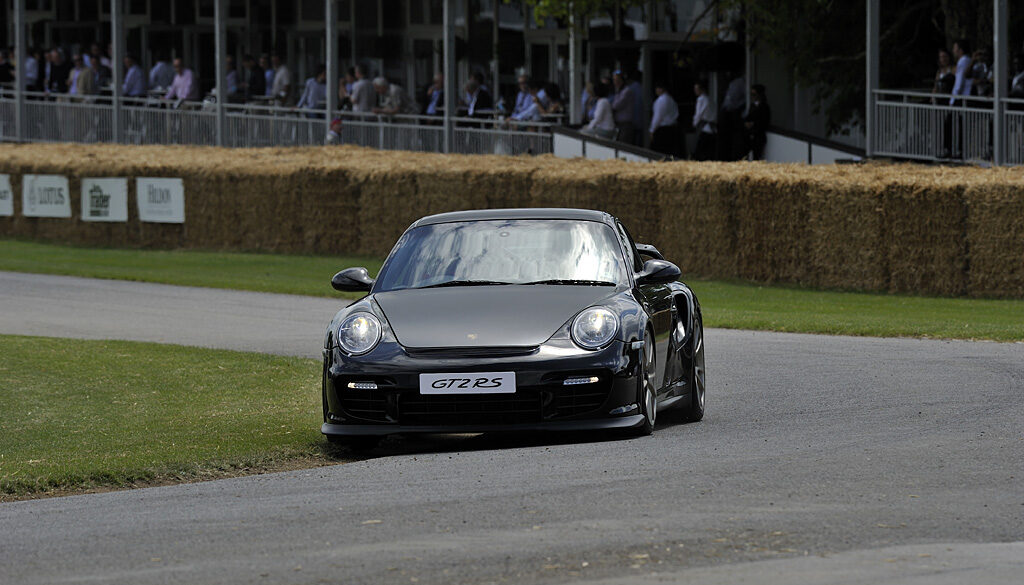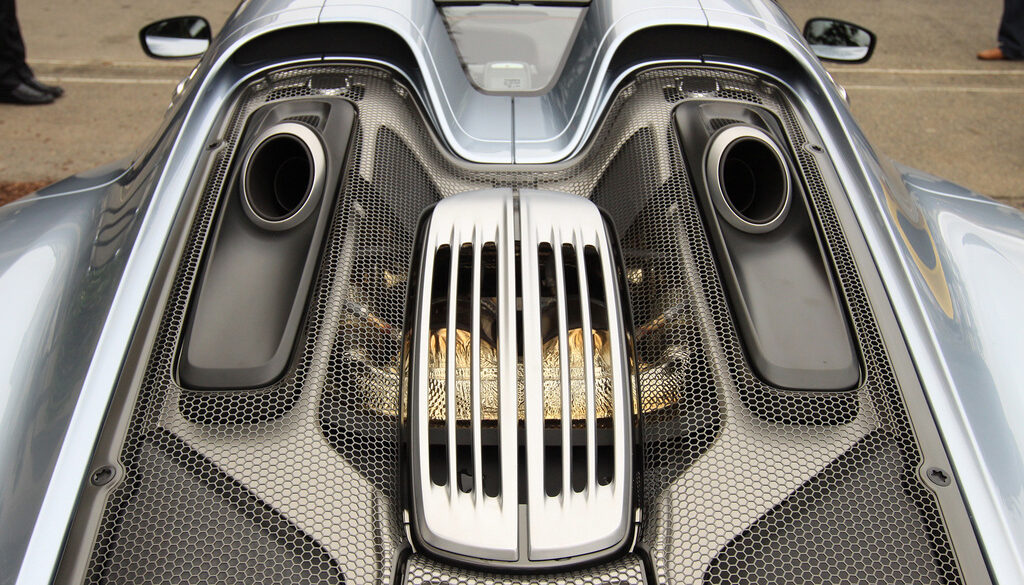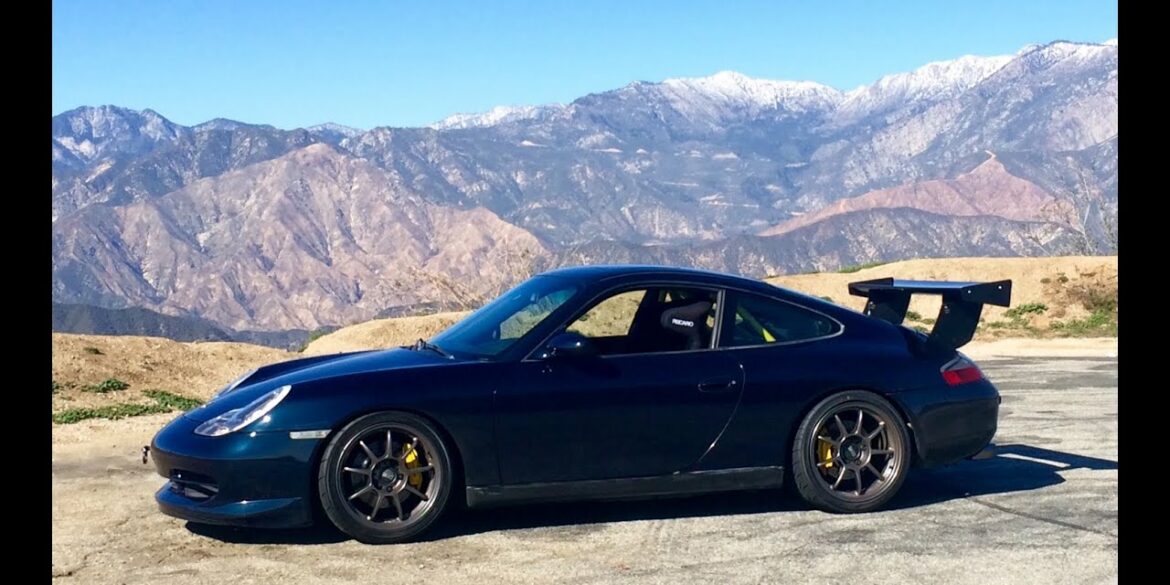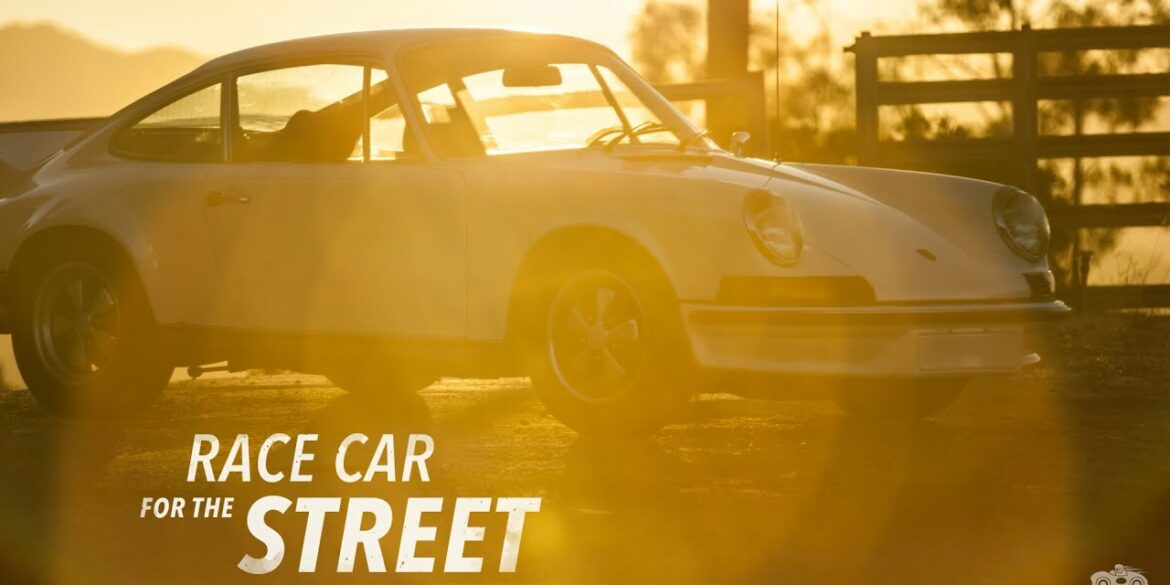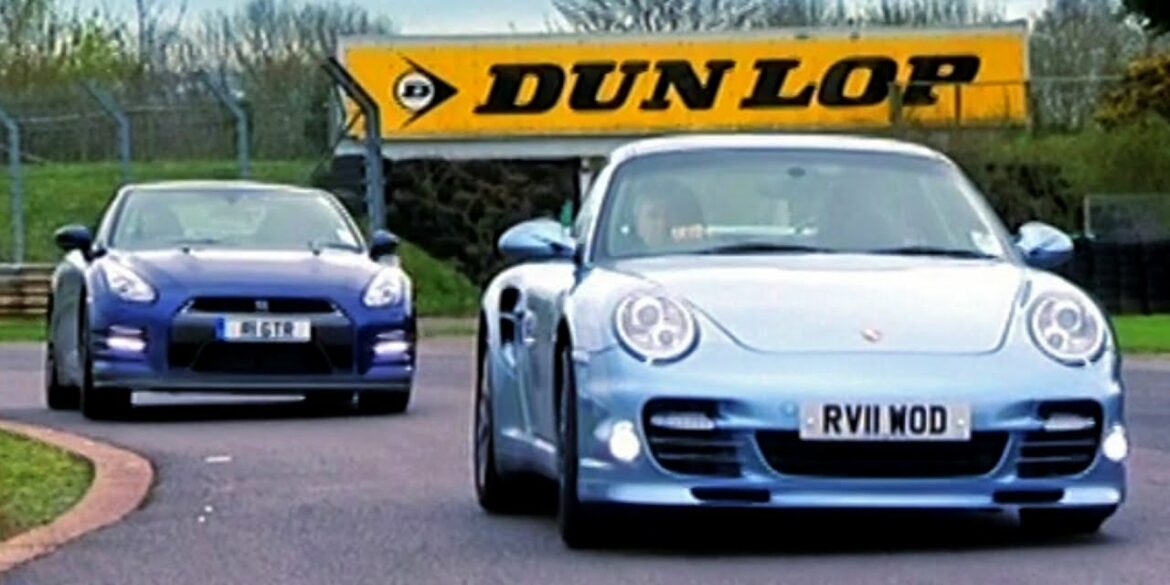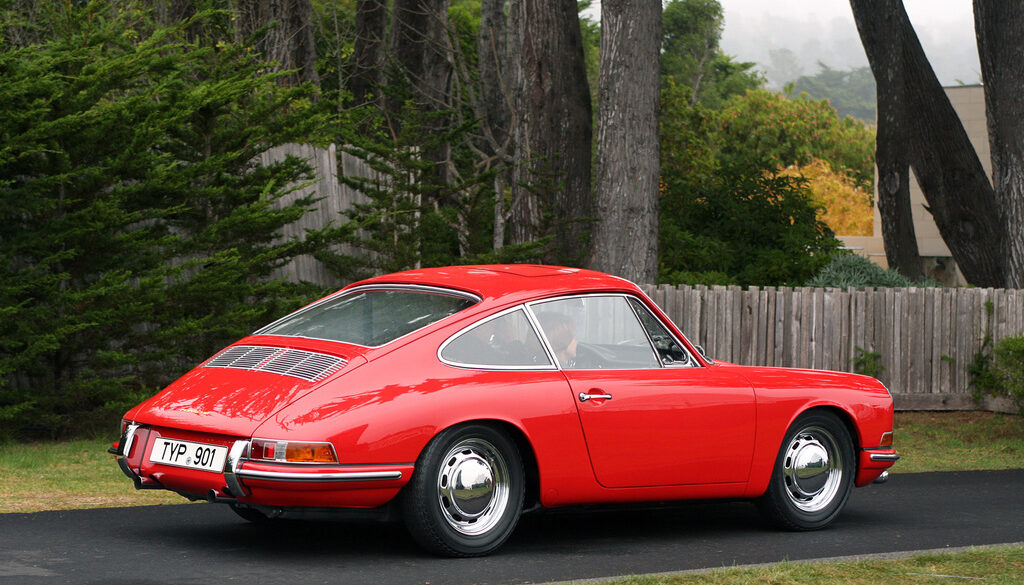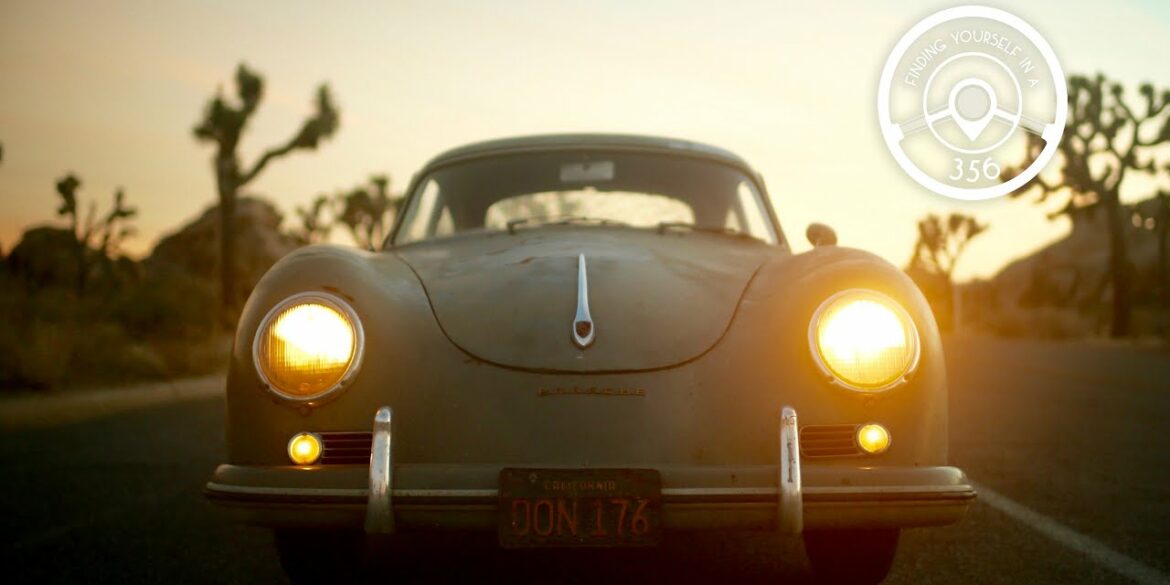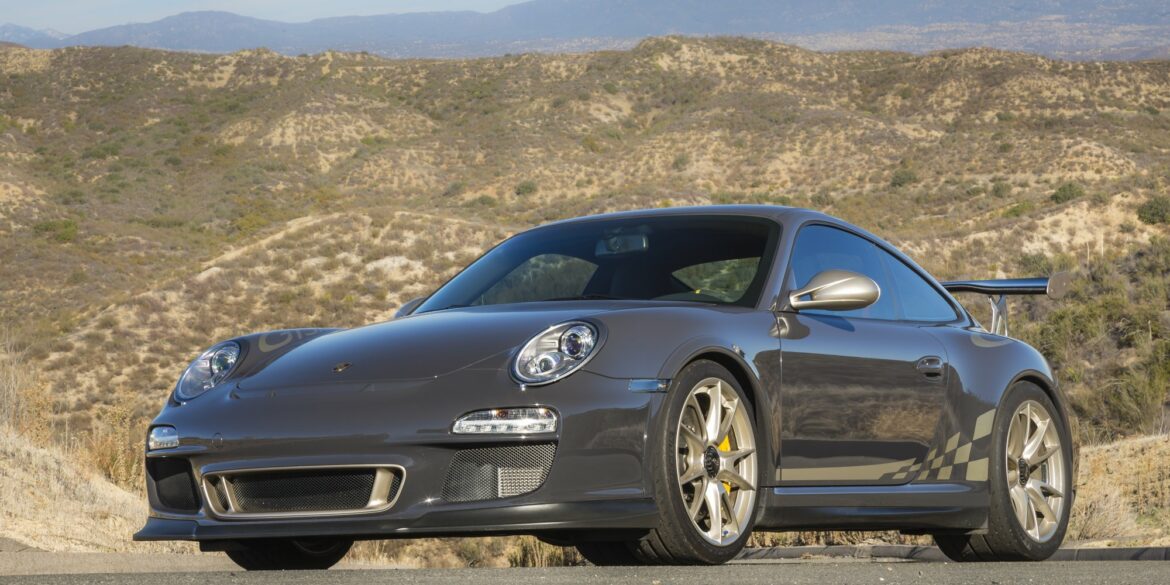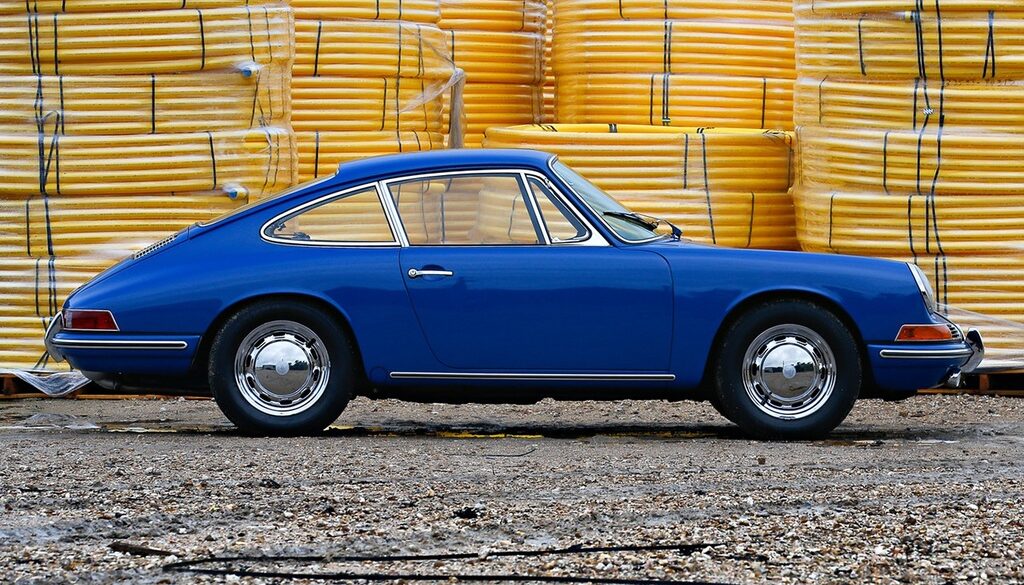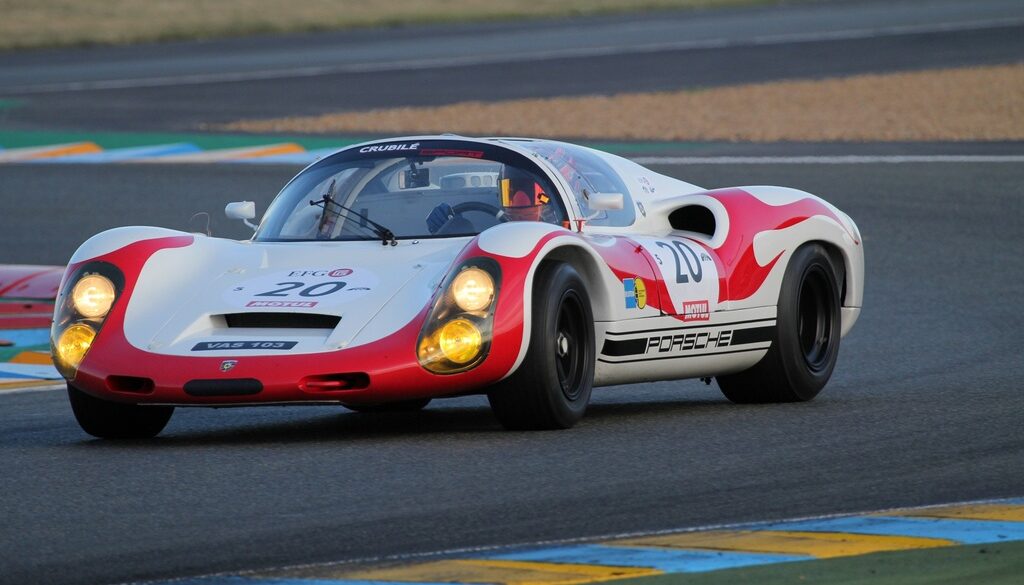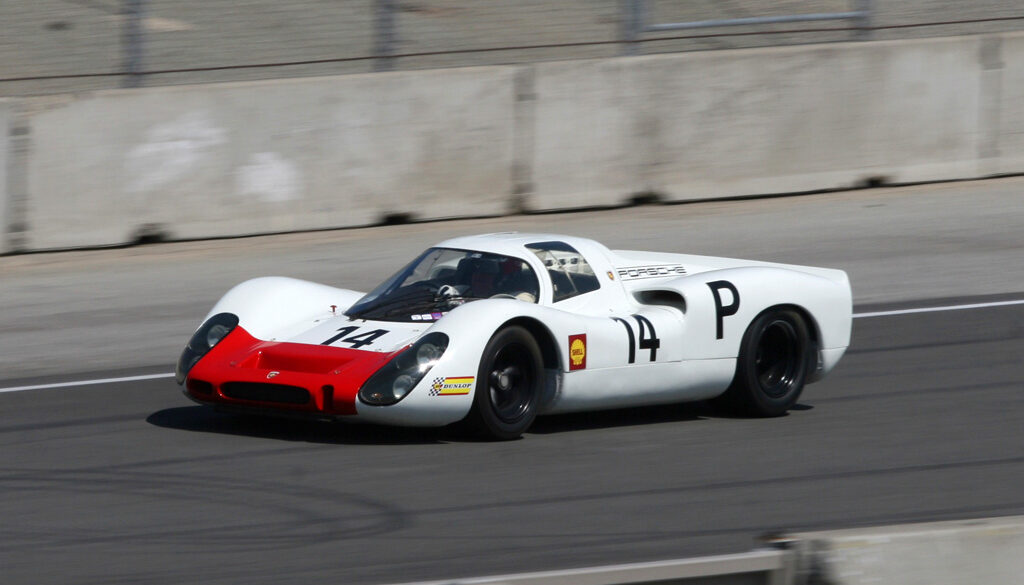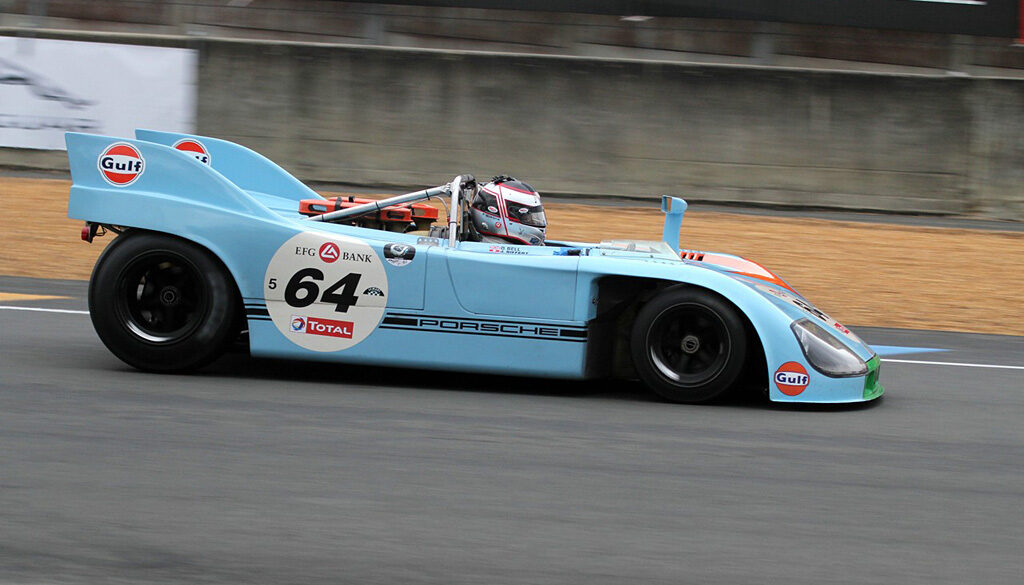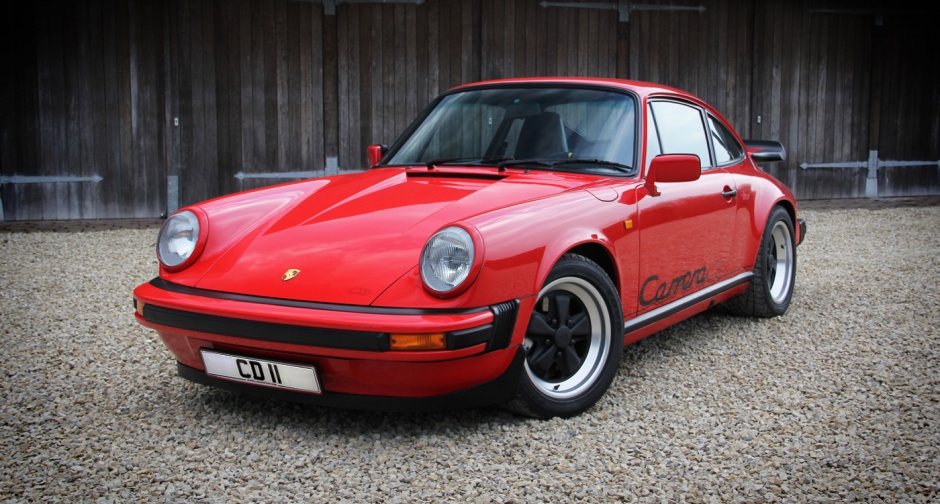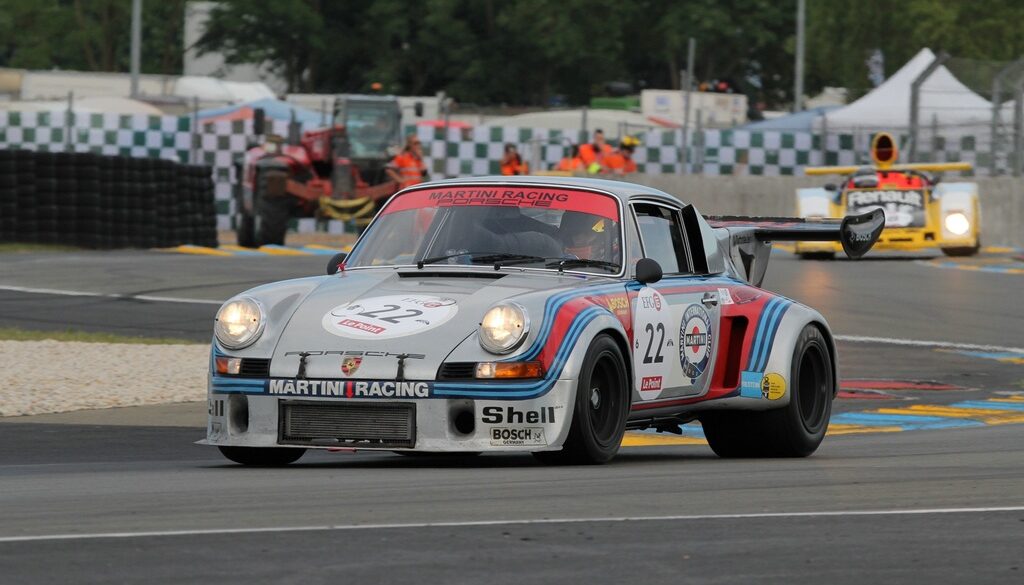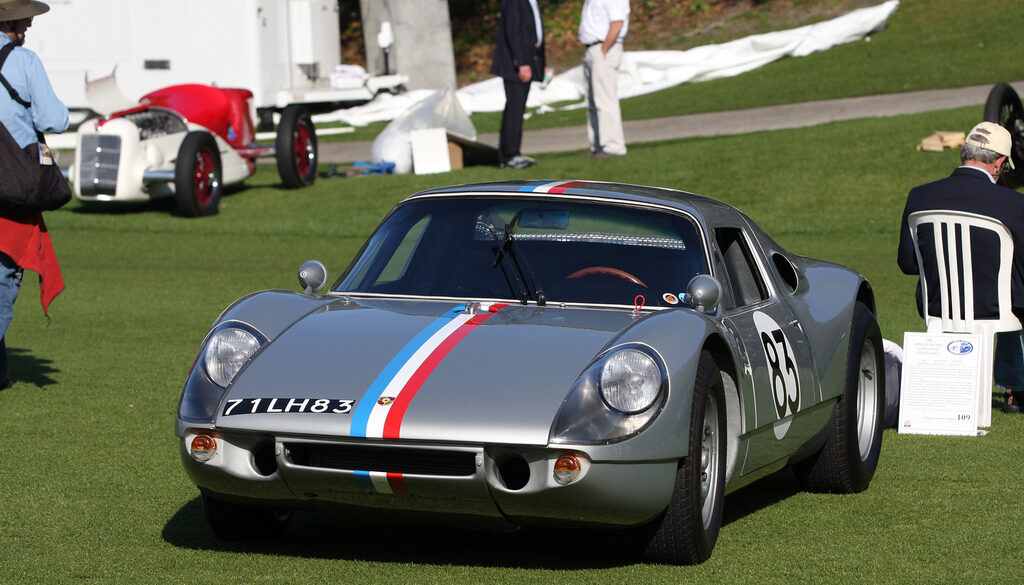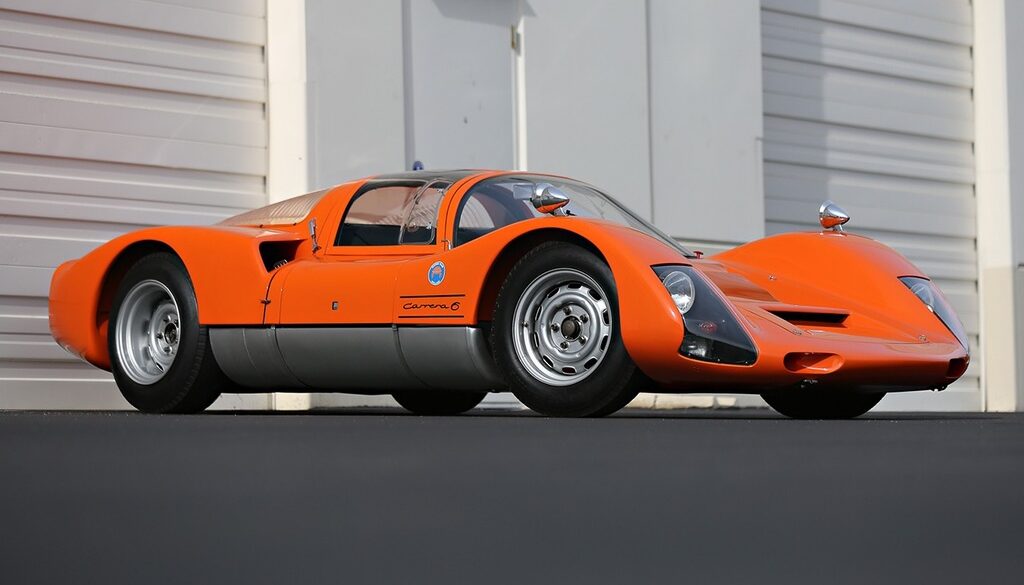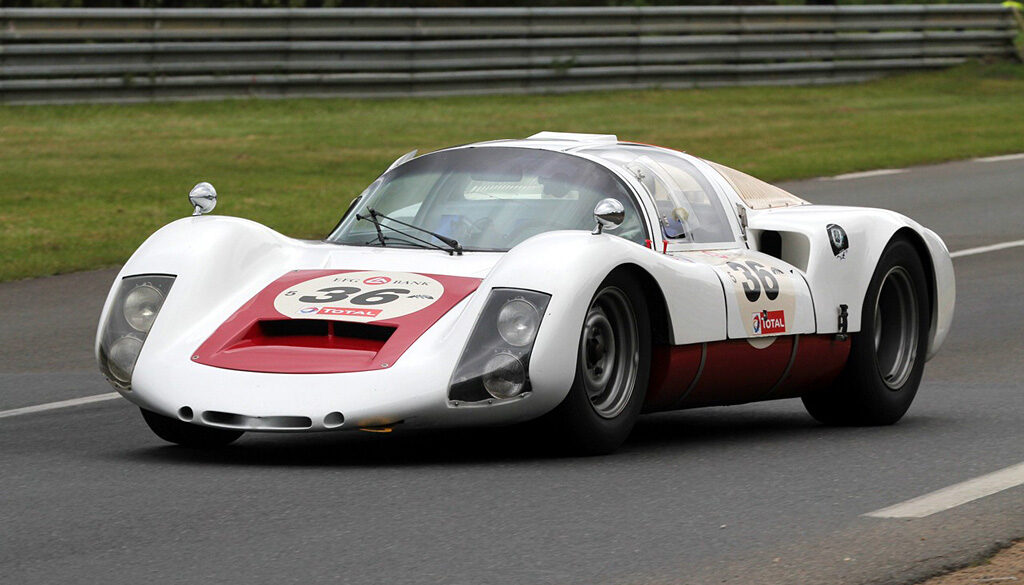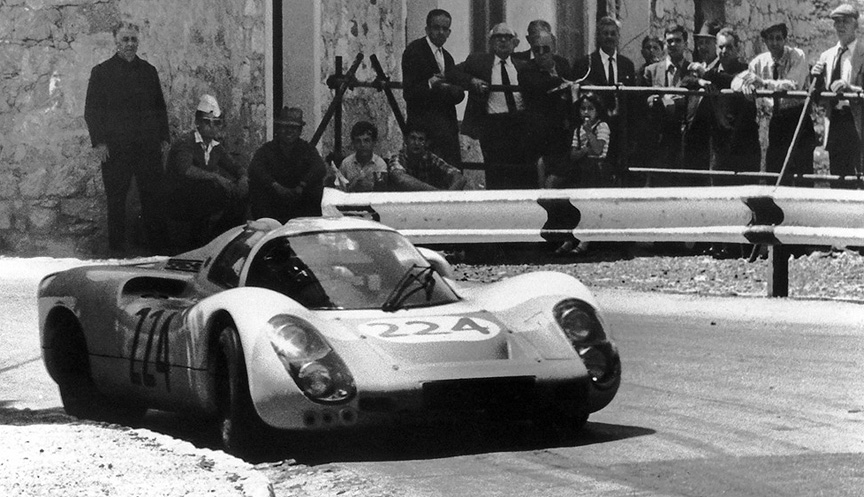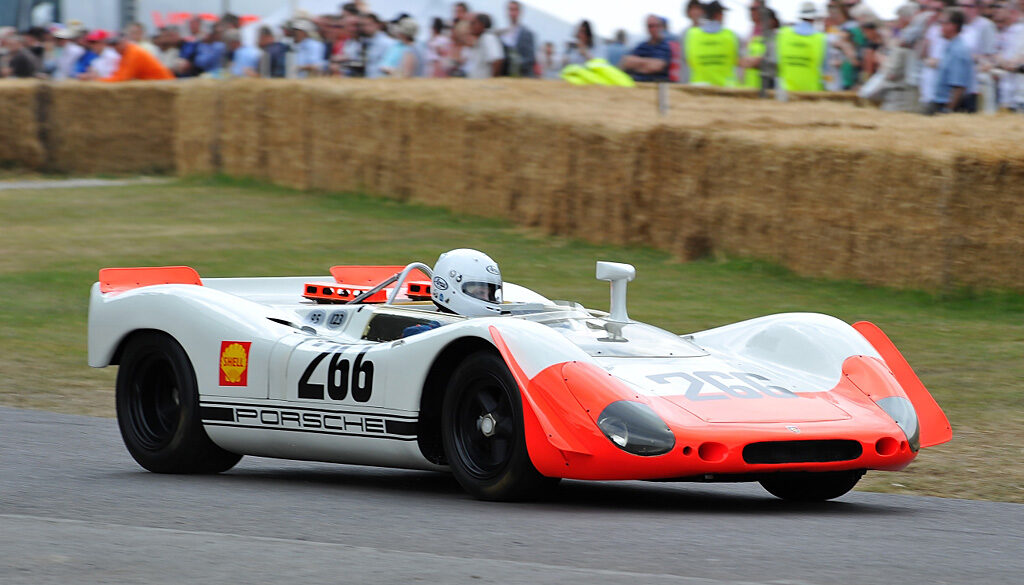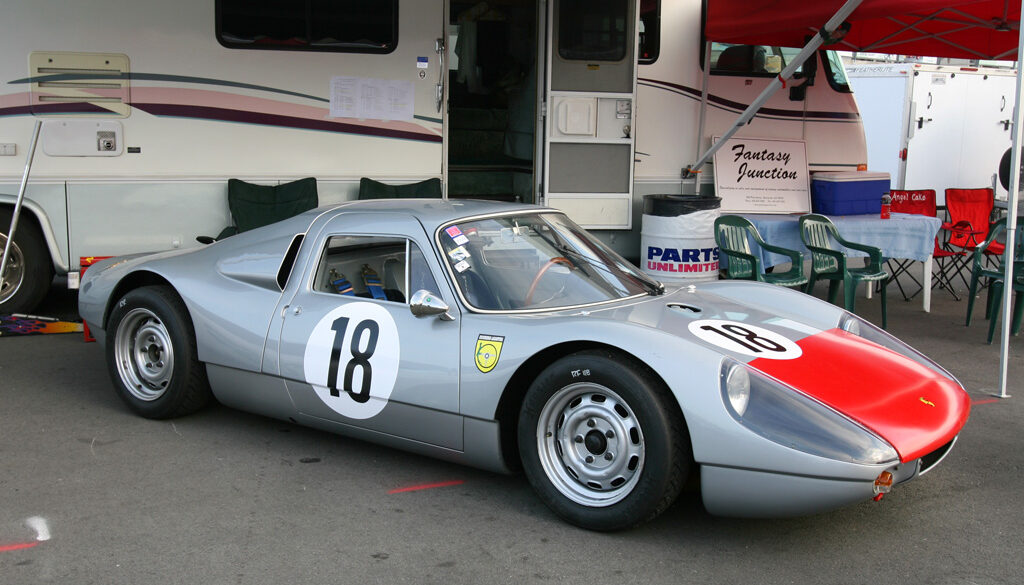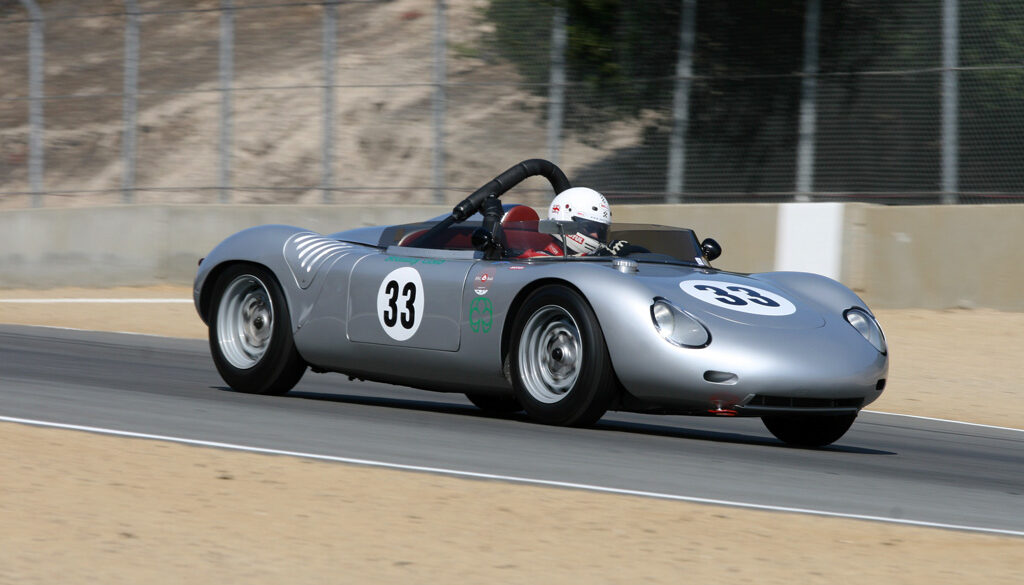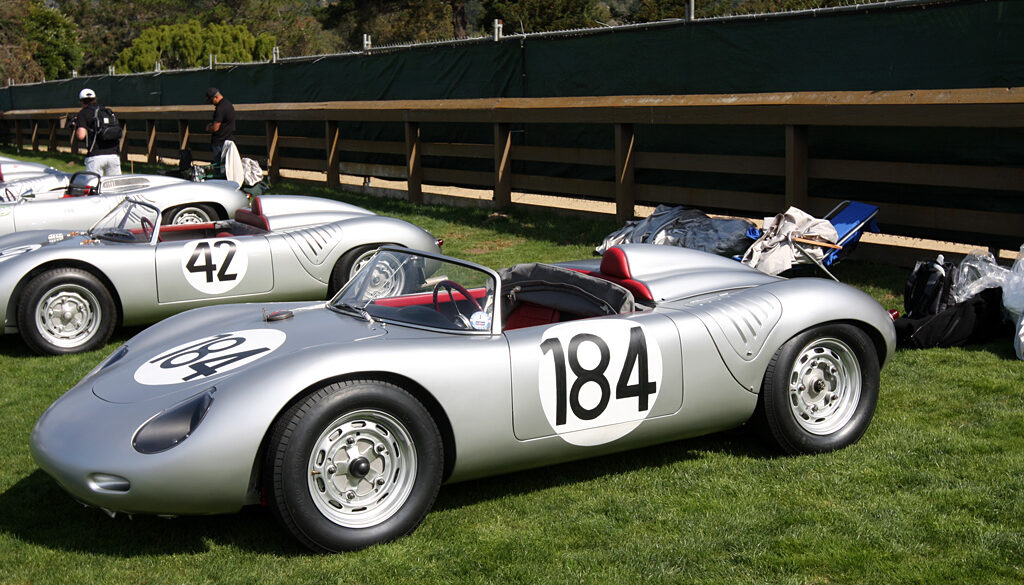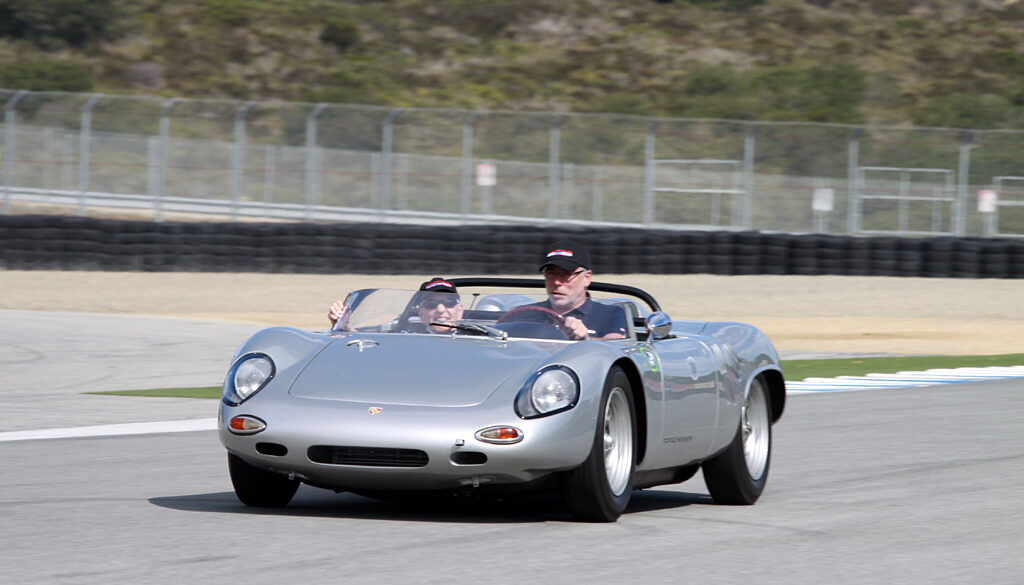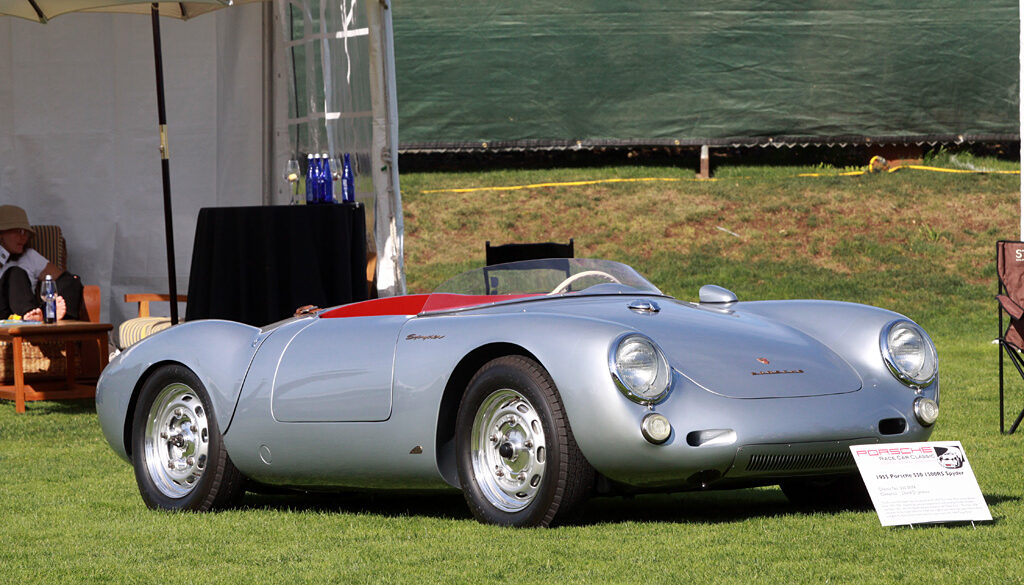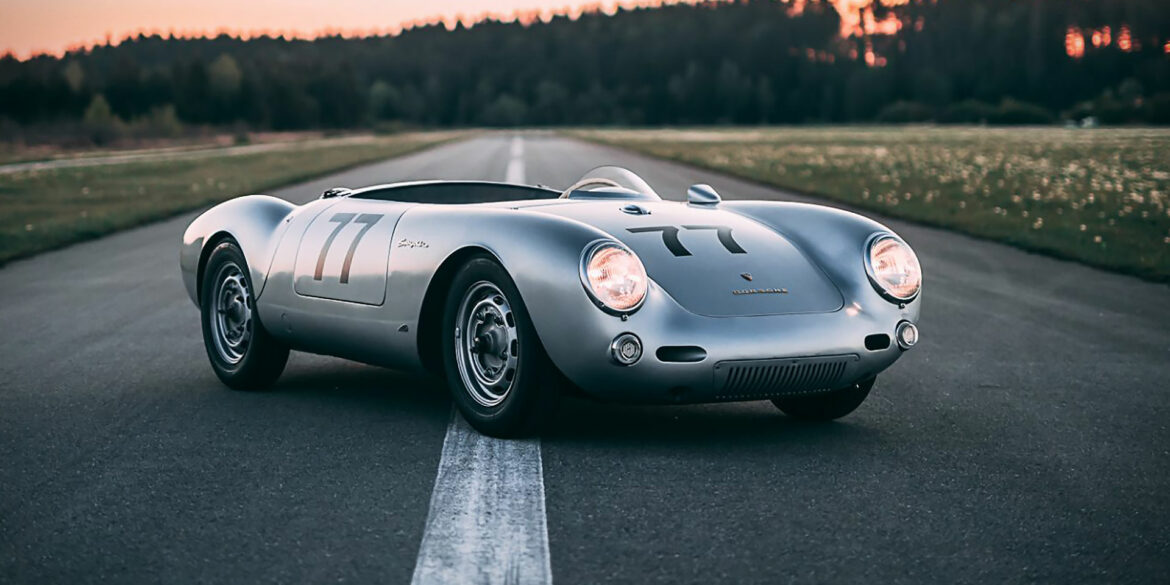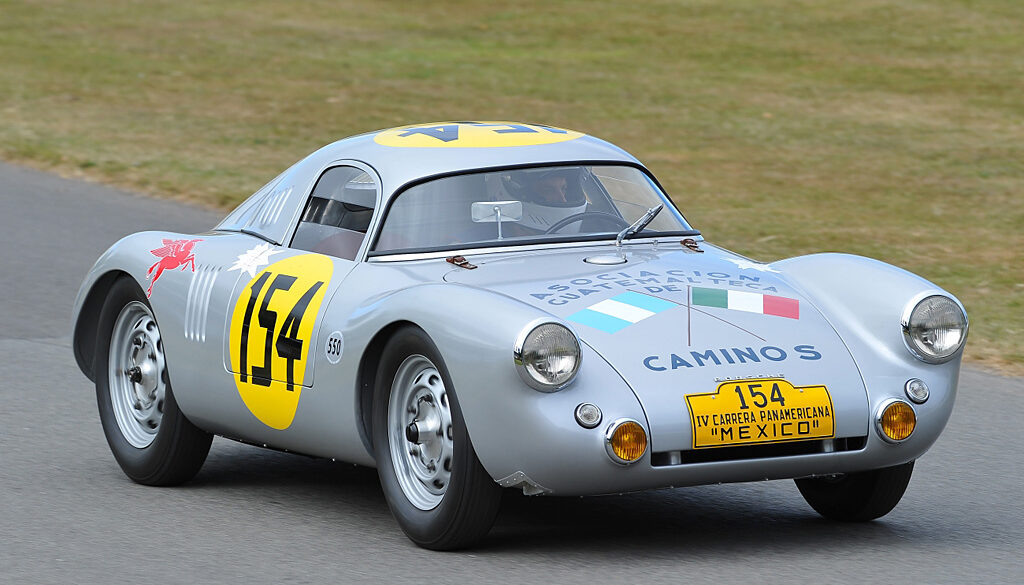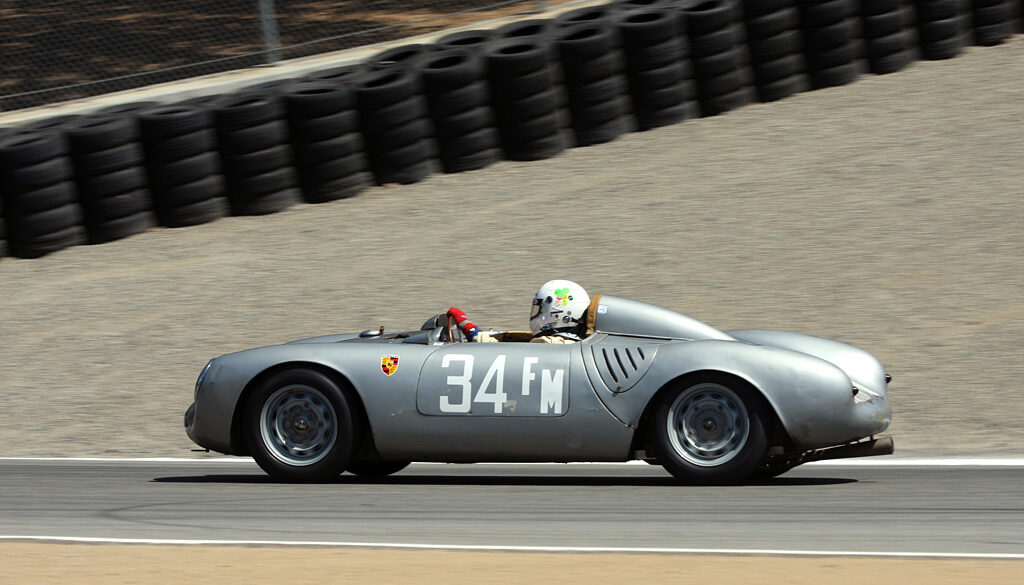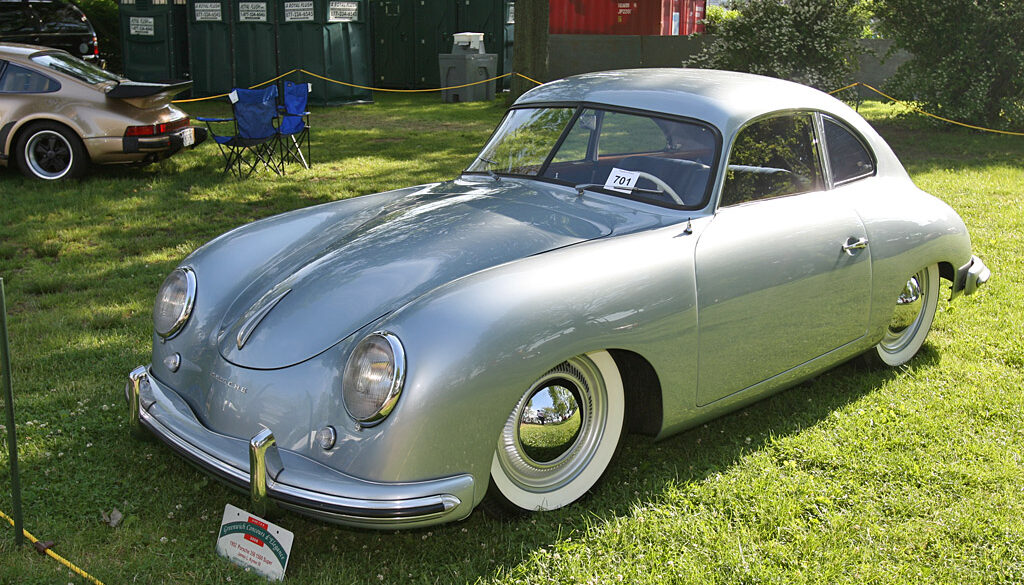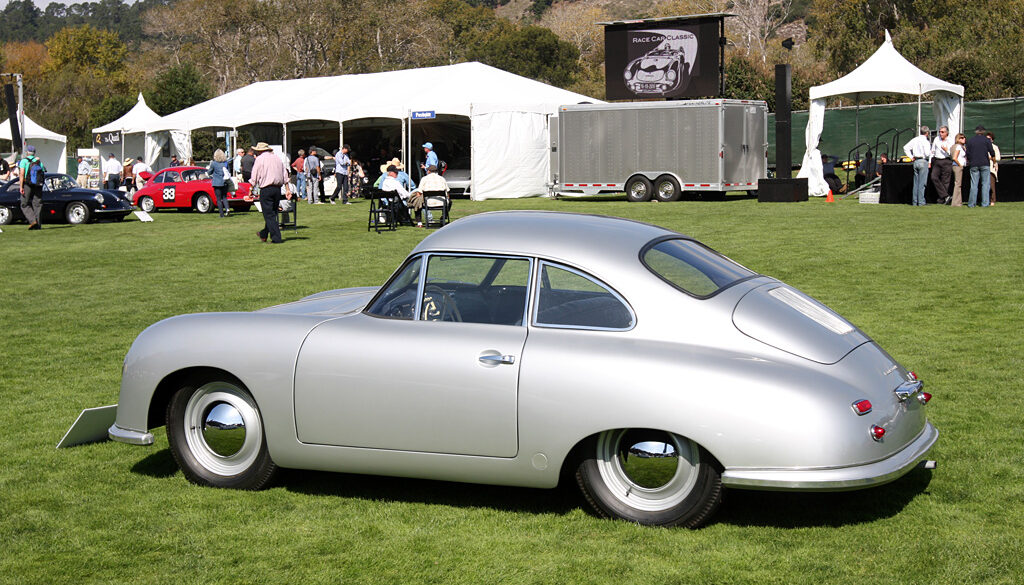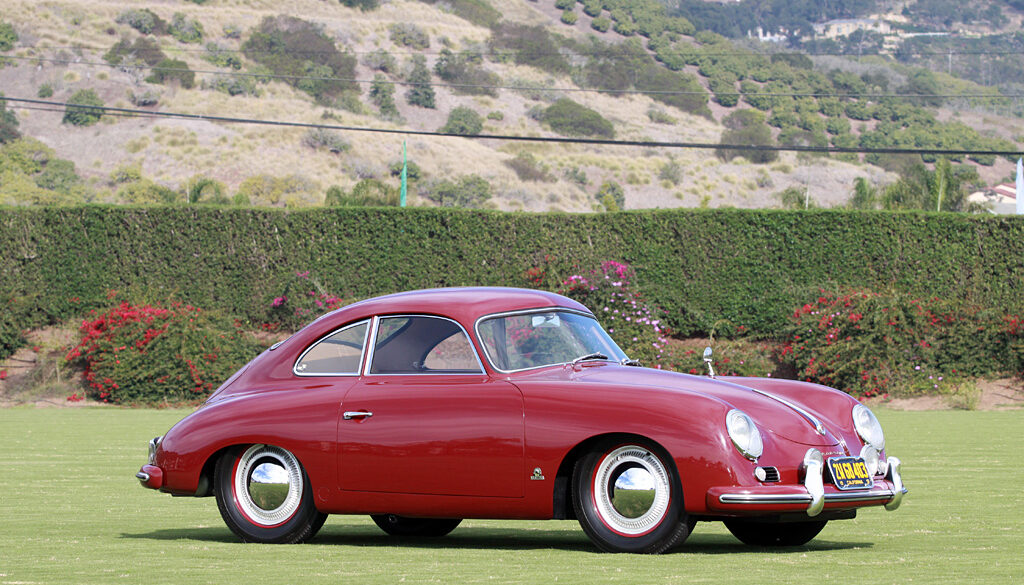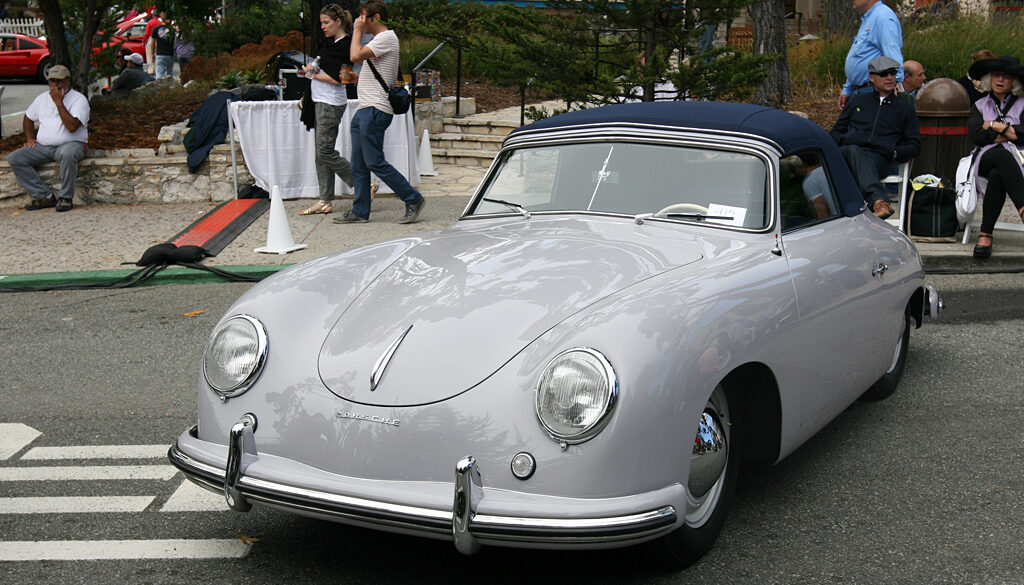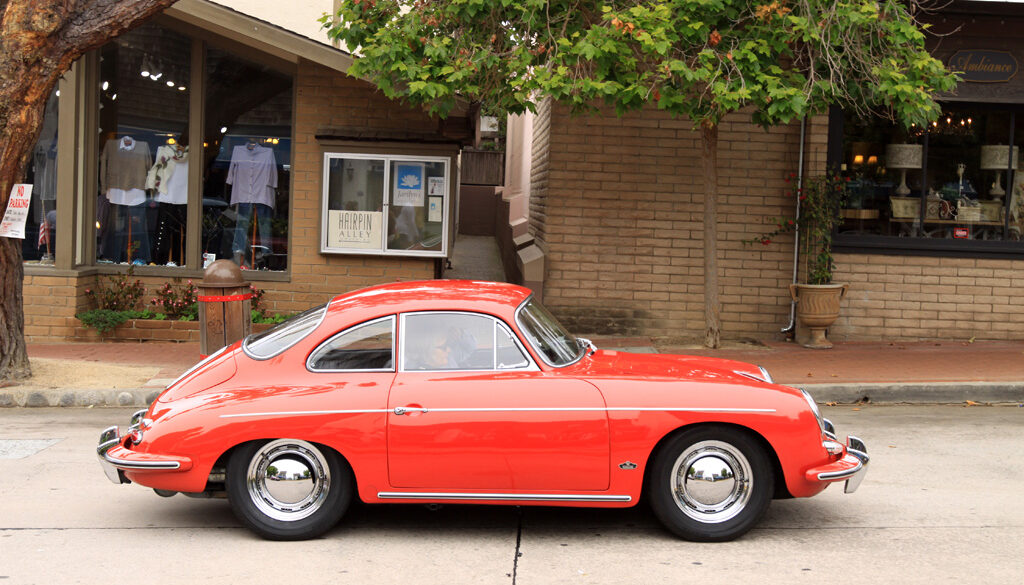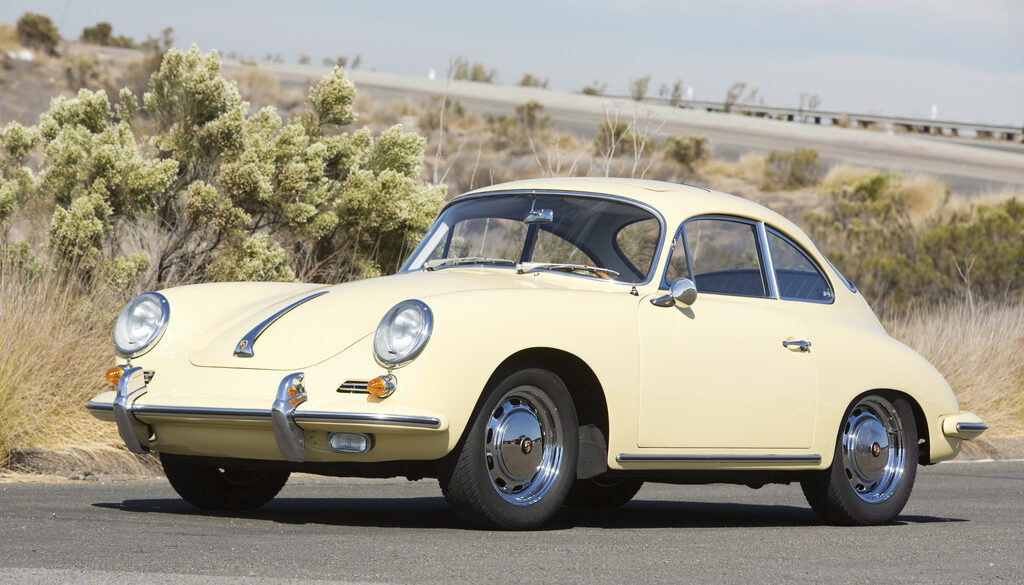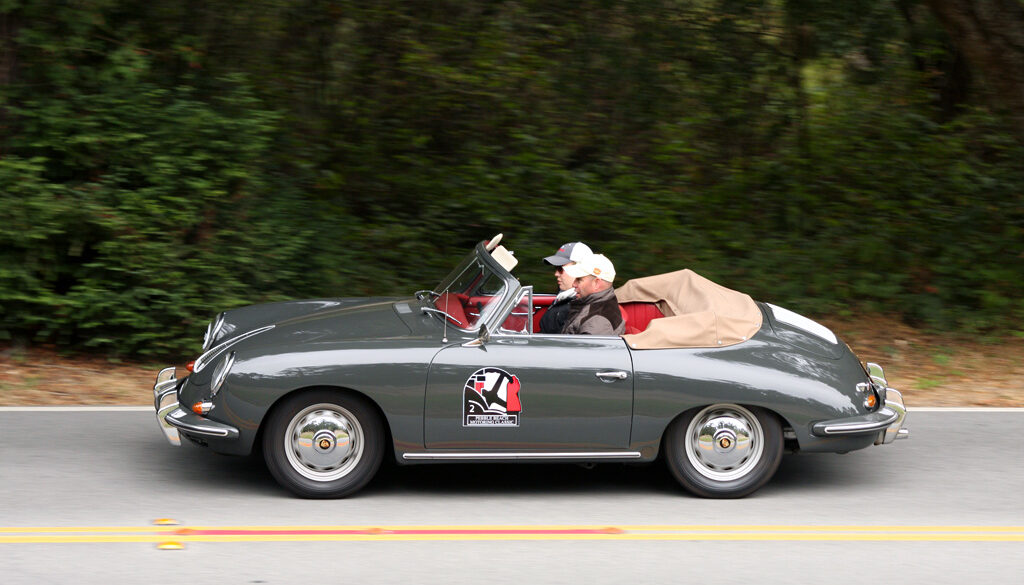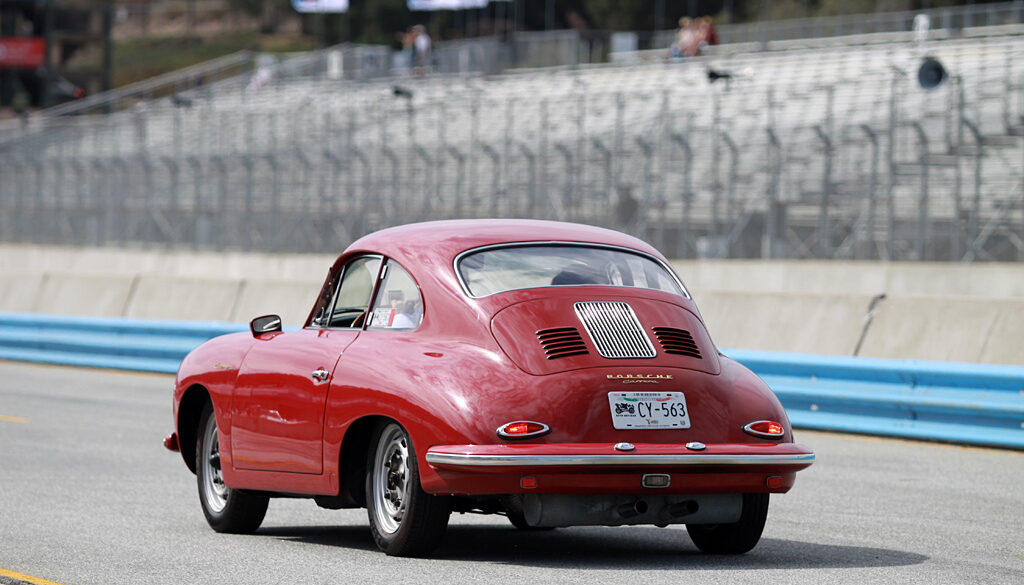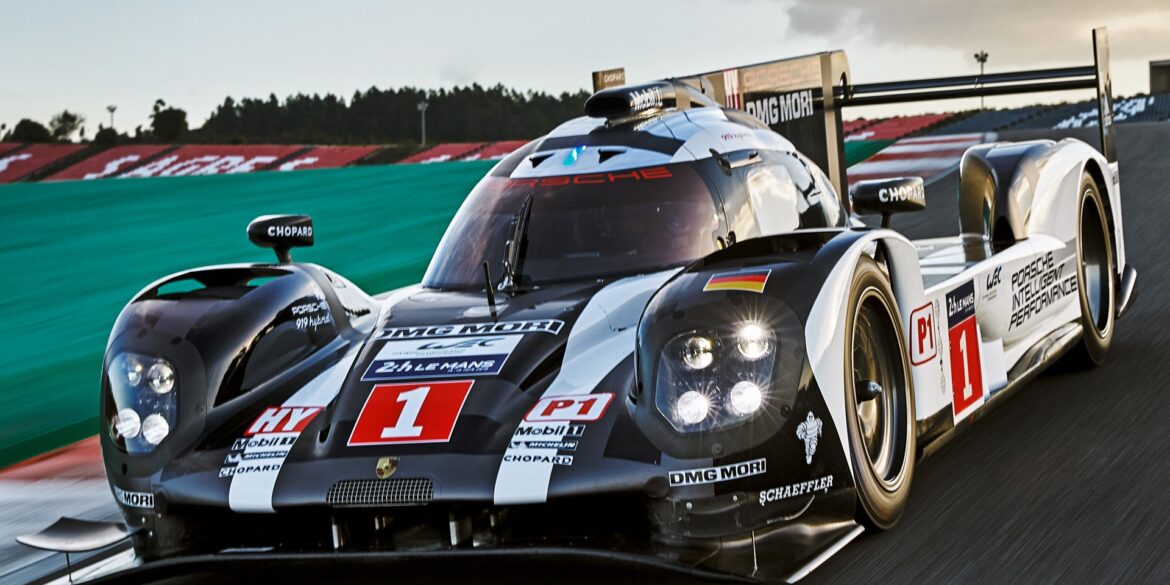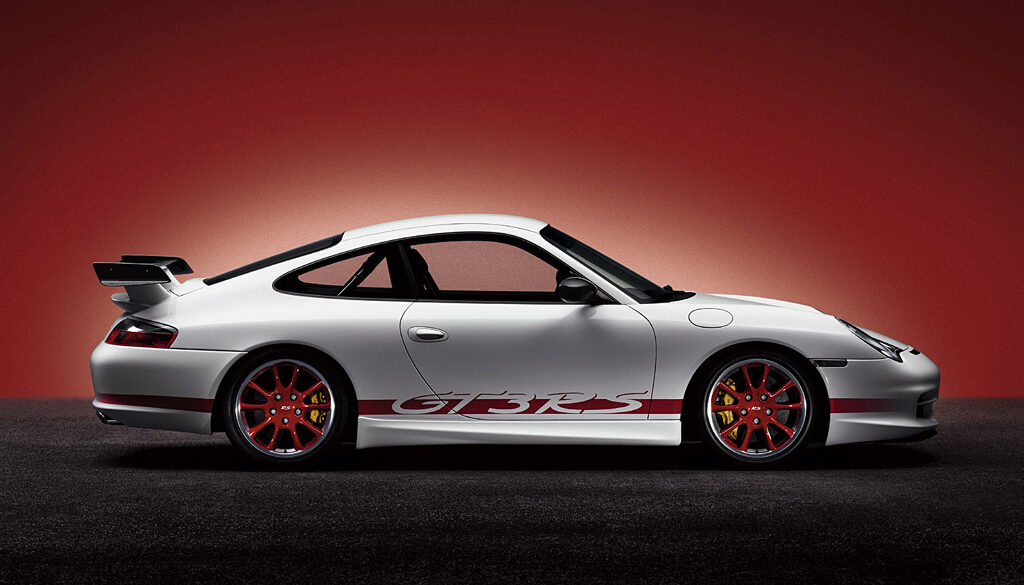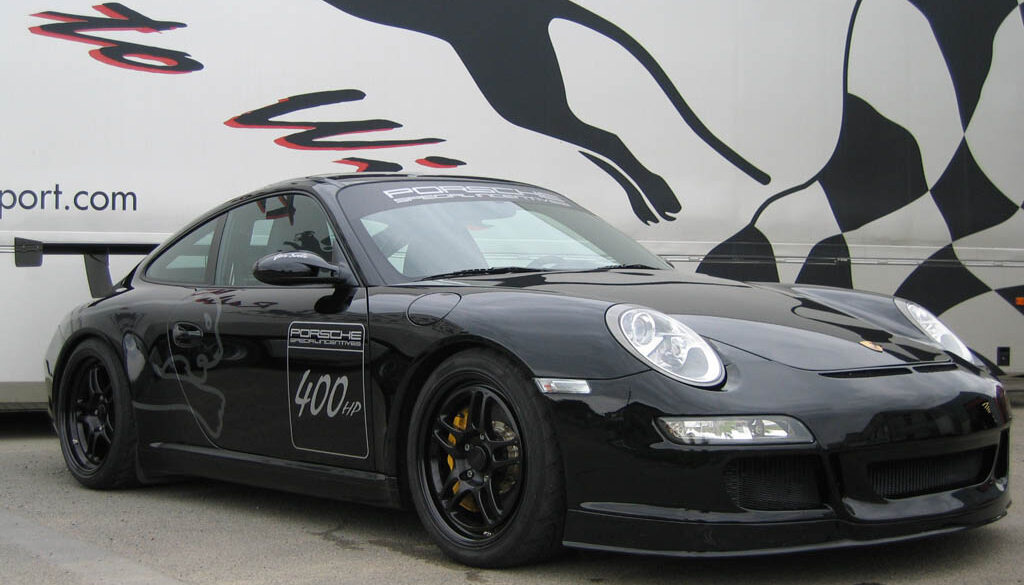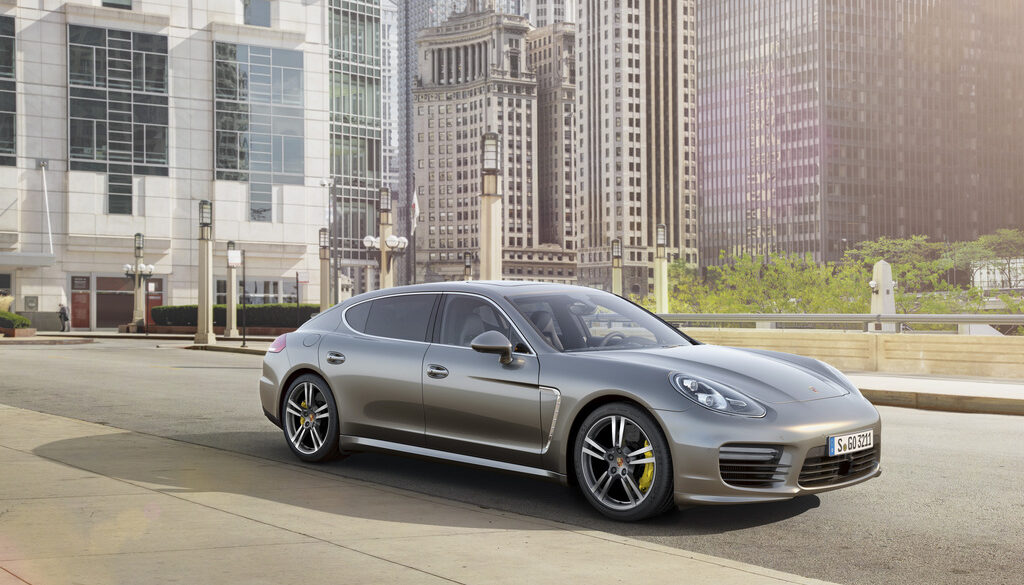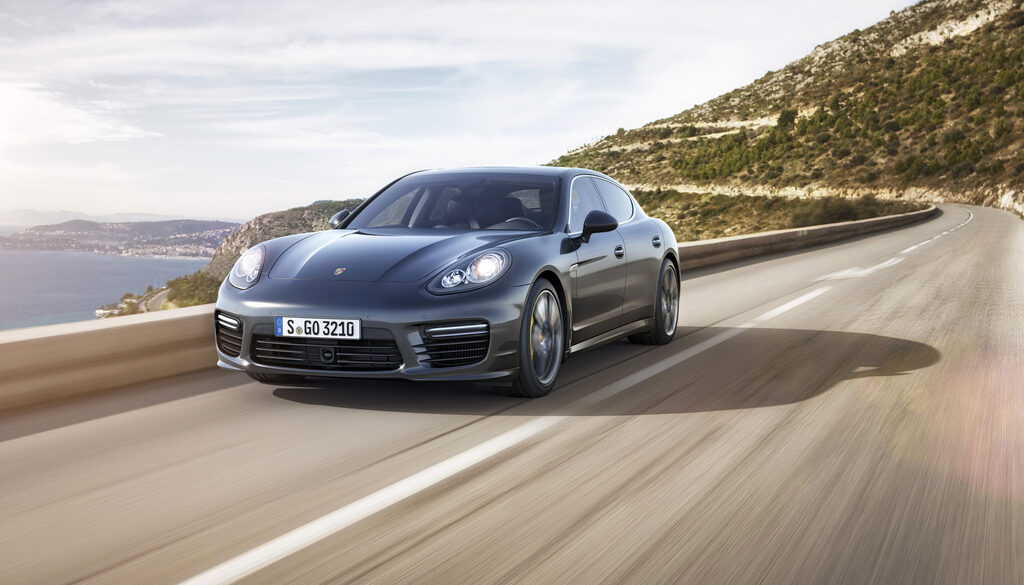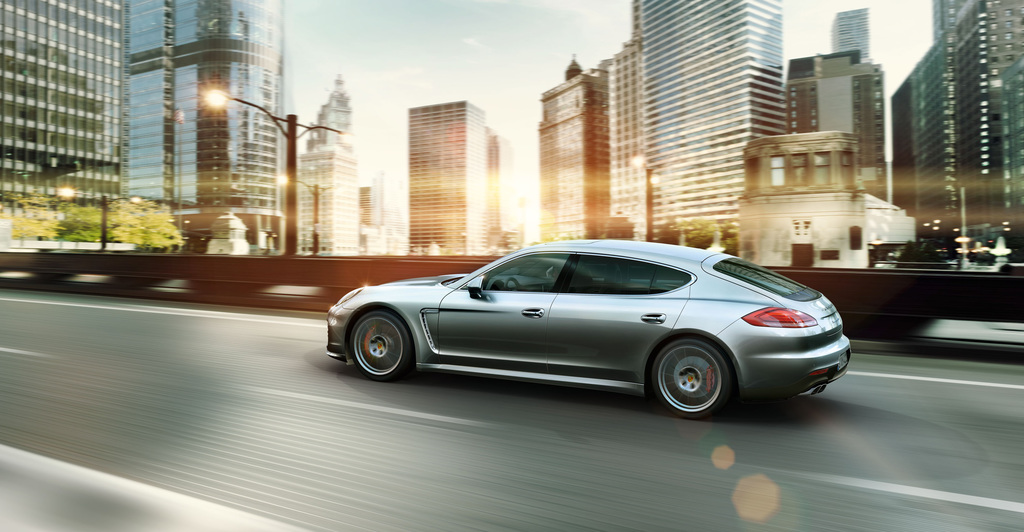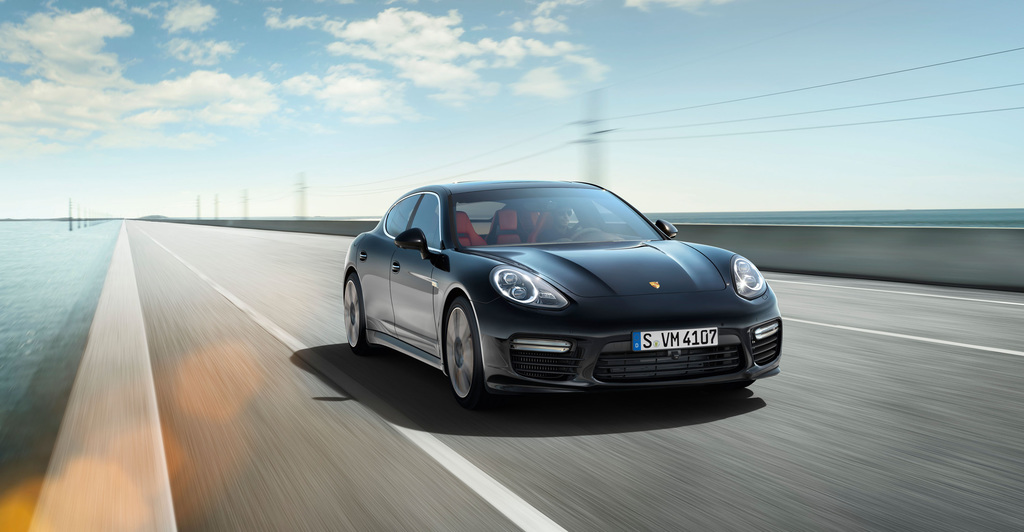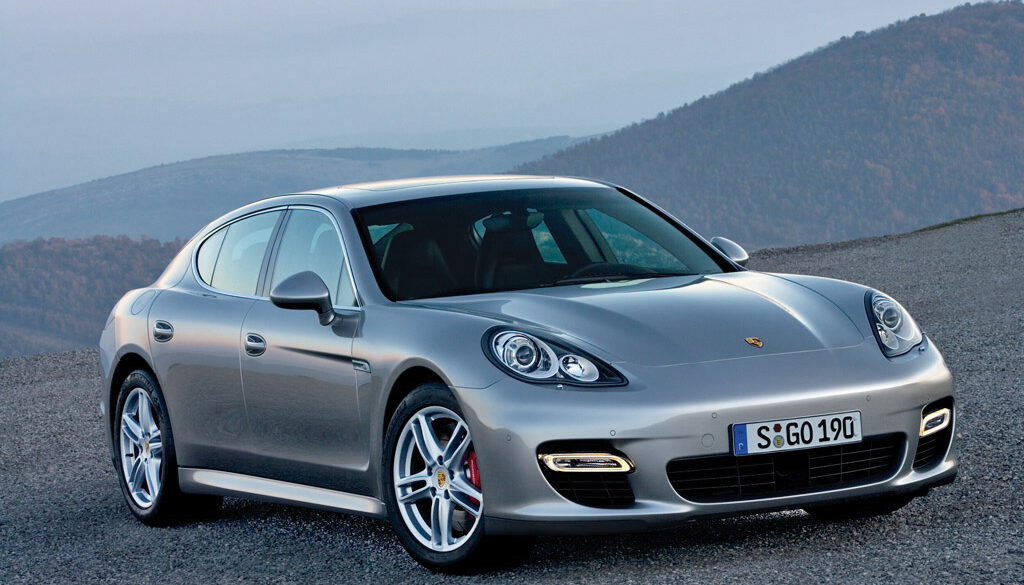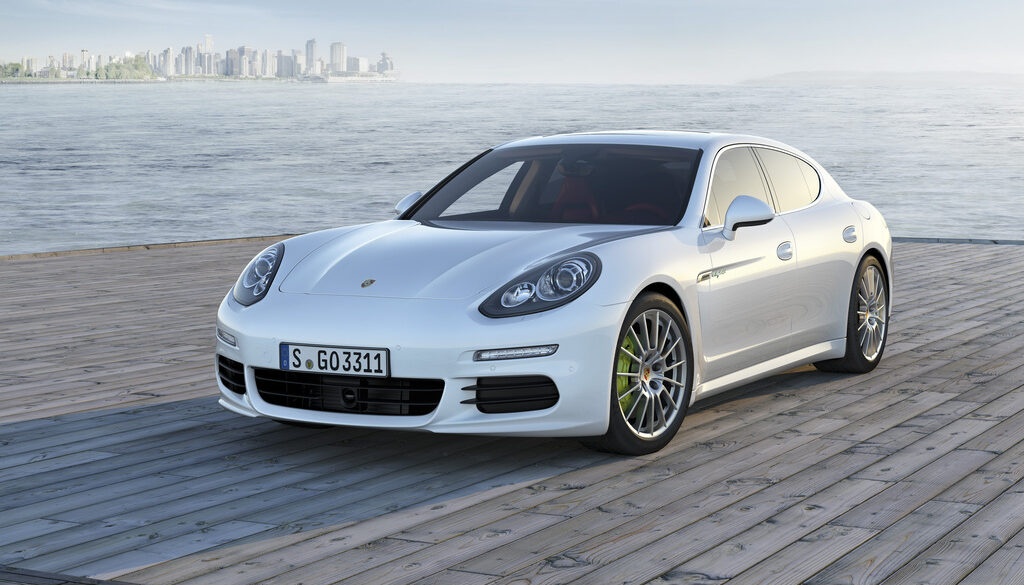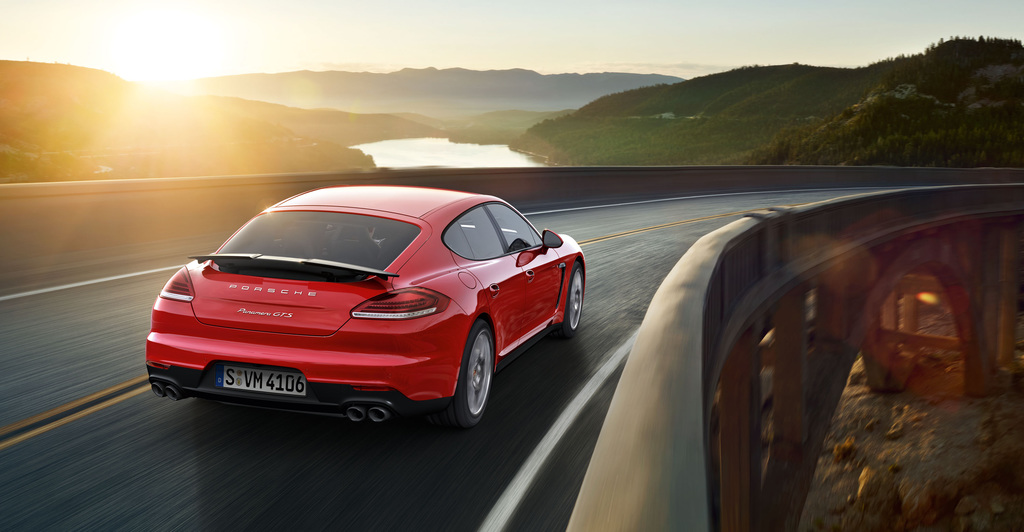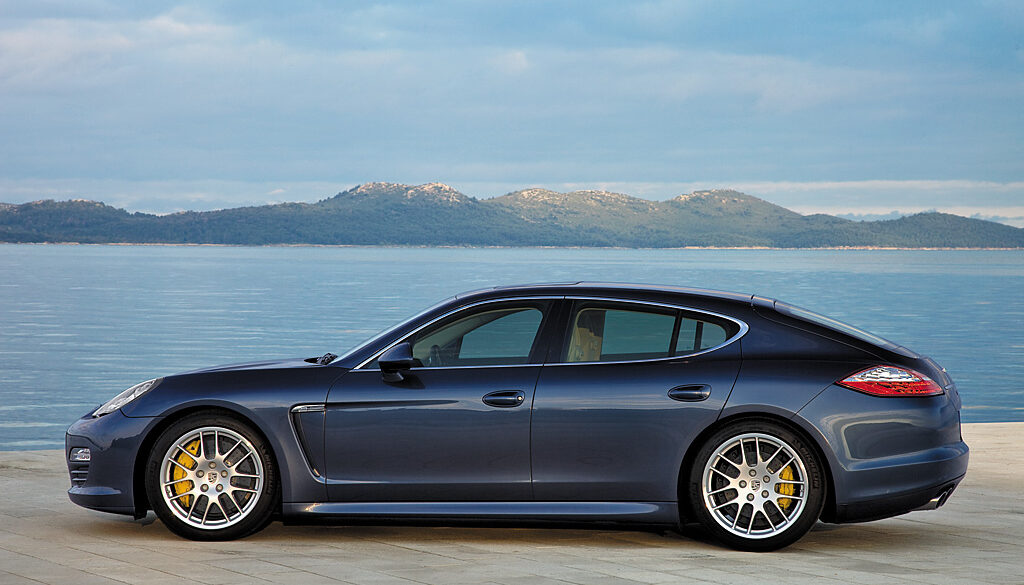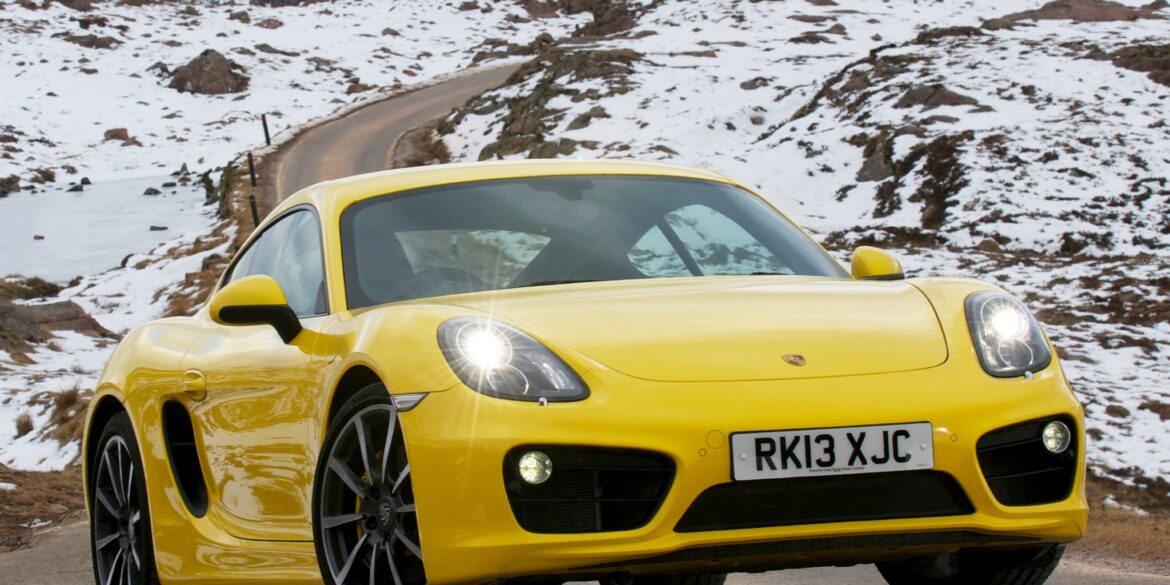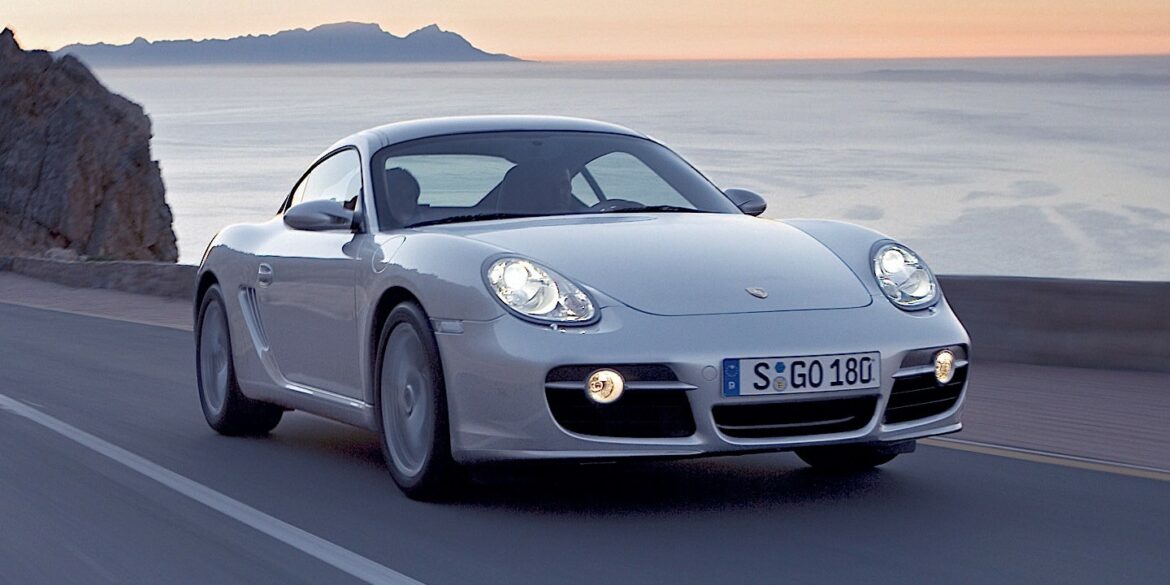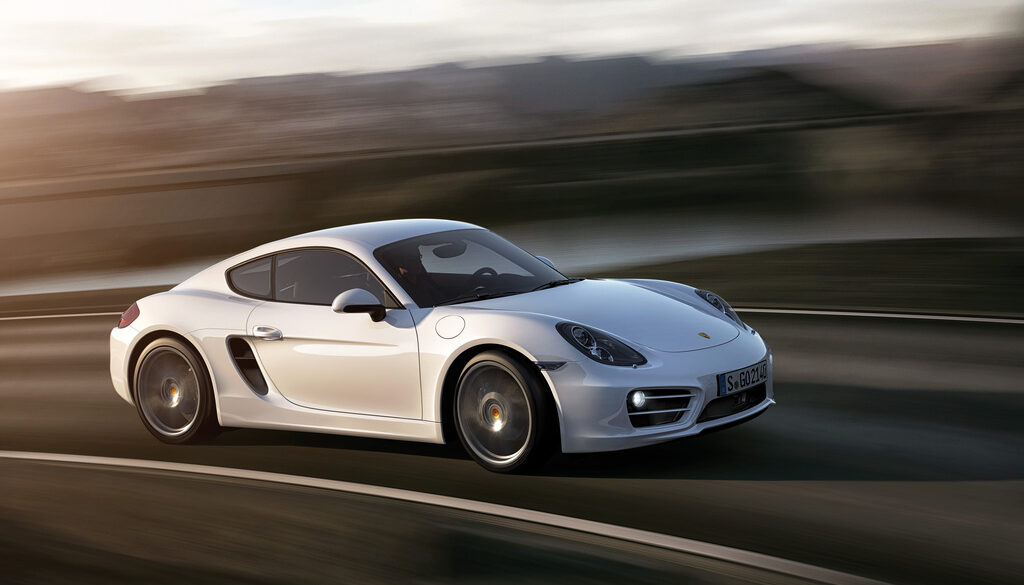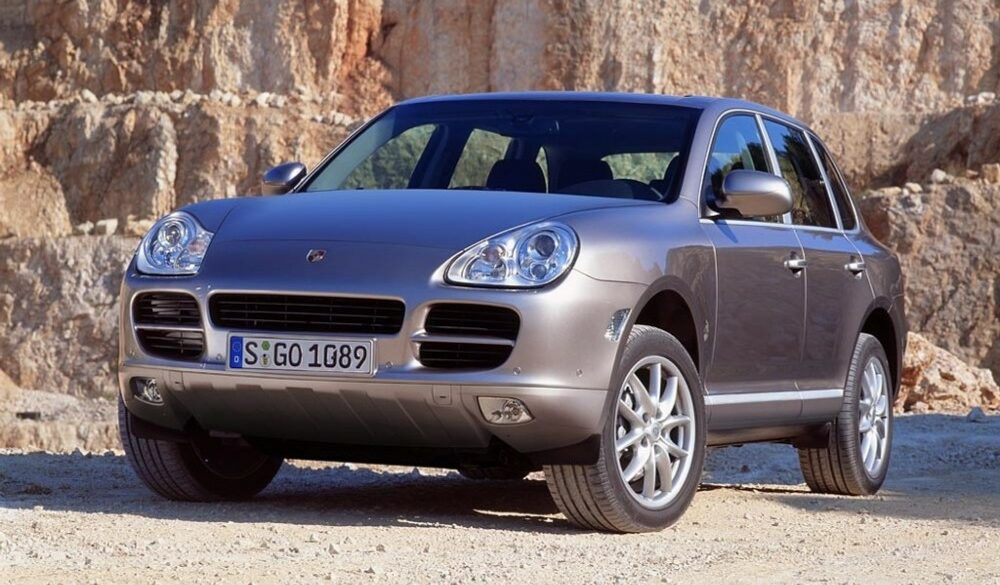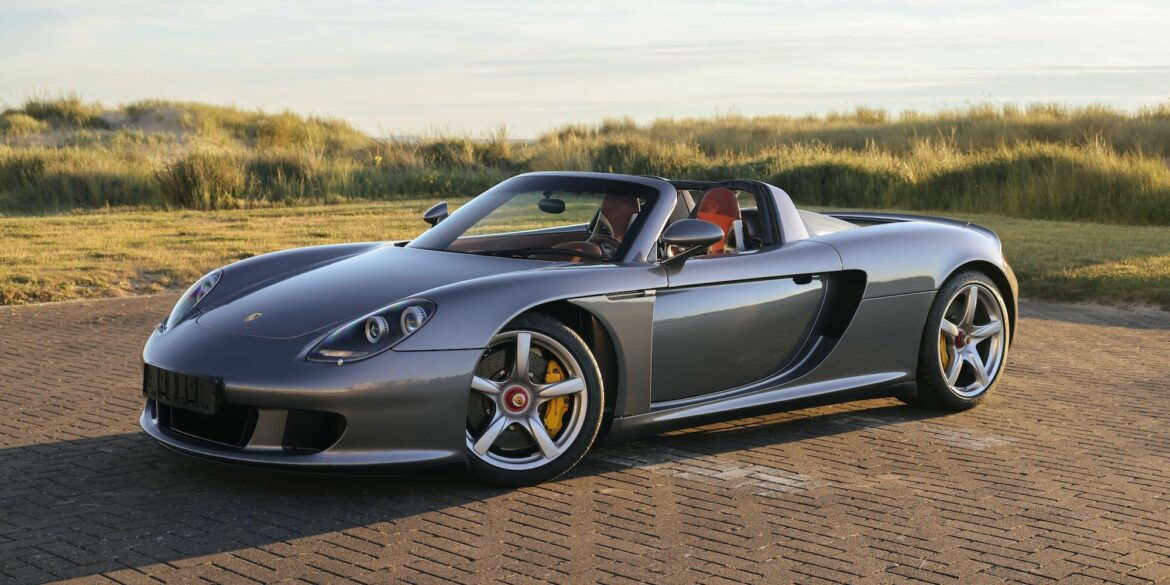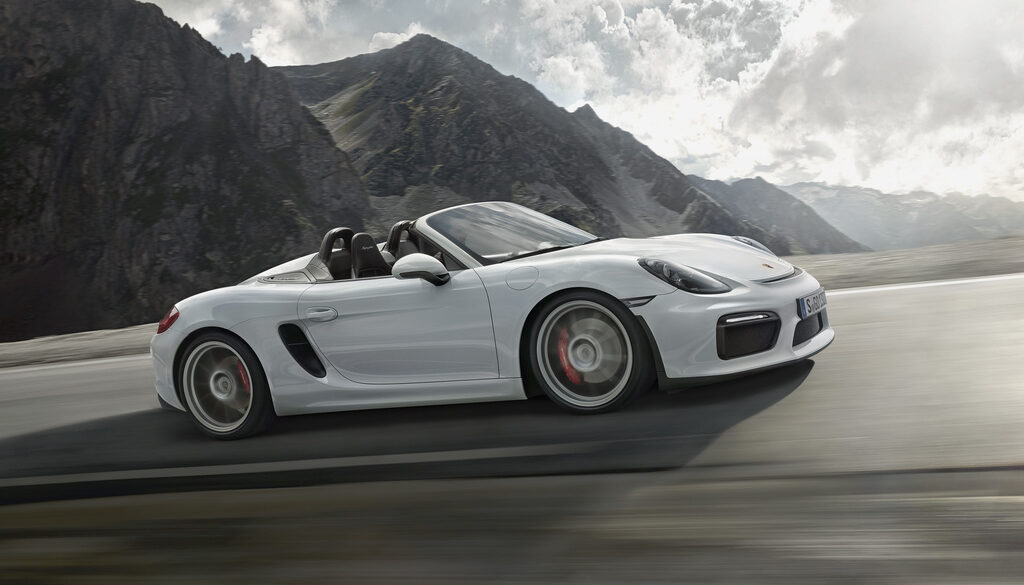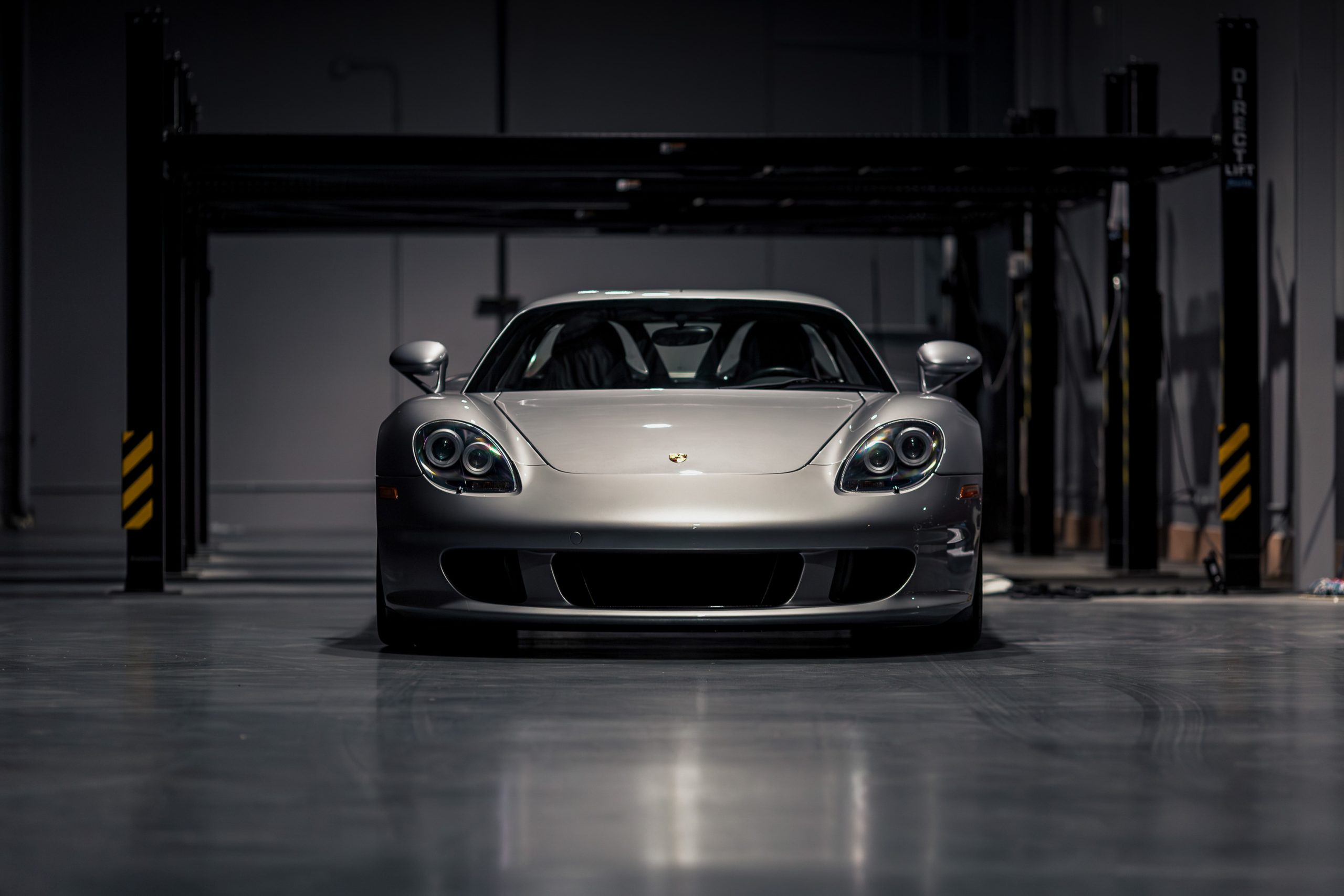This extreme road sports car based on the Porsche Boxster is reminiscent of the groundbreaking Porsche 550 racing coupé that started in 1953 at the 24 Hours of Le Mans. The front and rear bonnet open in opposite directions and fuel is supplied via a central nozzle at the front. At the rear is an eight-cylinder engine with excessive sound development.
JoinedMay 4, 2021
Articles3,547
Comments2
I am an Aussie boy, born and raised in Sydney who has now been living in my adopted hometown of New York since 2004. I never say NO to beer or pizza and love my wife and our three little boys. I'm an obsessed car nutcase. I talk about cars all day long. I have been into Porsches, Ferraris and every other cool carmaker since as far back as I remember. Back in 2013 I partnered up with some friends to acquire and operate some of my favorite automotive sites on the planet and Stuttcars was one of those sites. I hope to be a great steward of the brand.
The rear of the world’s most-produced GT racing car now houses a 4-litre, six-cylinder flat engine for even more drive. Thanks to thoroughbred motorsport technology, the compact engine with direct fuel injection delivers peak performance of 357 kW (485 hp). A range of innovative details also improve efficiency in addition to engine performance, ensuring even better durability of the naturally aspirated engine in racing mode and reduced maintenance costs.
The last evolutionary stage of the 928 model featured flared rear wings, a red light panel at the rear, a rear wing painted in exterior colour, exterior mirrors in the Cup design plus 17" Cup rims as standard. The 5.4-litre engine of the GTS generated 350 hp. The 928 GTS came for sale in late 1991 as a 1992 model in Europe and in spring of 1992 as an early 1993 model in North America. Changed bodywork, larger front brakes and a new, more powerful 5.4 L engine were the big changes.
Porsche 911 Turbo S 991 MK2 AUTOBAHN POV Porsche 911 Turbo S 991 MK2 AUTOBAHN POV 295km/h by AutoTopNL...
Porsche 911 R Reviewed Porsche 911 R – With one Top Gear test track and one rear-wheel-drive, naturally-aspirated, 493bhp manual Porsche to hand, you might assume Matt got quite excited filming this one… and, um, you’d be right. Sit back then, and celebrate nine minutes of noise, sideways-ness, driver involvement...
The Porsche 911 R On Track The phenomenal Porsche 911 R stars in our penultimate video from Britain’s Best Driver’s Car 2016. Every autumn we set out to name Britain’s Best Driver’s Car, in our annual new sports car extravaganza. Last year the Ferrari 488 GTB saw off all comers to...
In 1989, 928 buyers had the choice of the S4 or the GT, a better-equipped, manual-only car. The 928 GT was sportier than the 928 S4. Thanks to various modifications, its power unit generated up to 330 hp. The GT was delivered as standard without side protection strips and with wheels in a unique design. It featured a dogleg manual gearbox, a more aggressive suspension, and special seven-spoke Club Sport wheels
1956 Porsche 356 C “When you’re out there in something like this, people just stop and…it might not even look like a car at first…it might look like a small spaceship floating around out there,” says Matt Hummel, adding, “this is my favorite car to get lost in”. A mis-spelled...
Porsche 997.2 GT3 Mountain Run The Porsche 997.2 GT3 featured several significant improvements over the 997.1 which preceded it. Center lock wheels became standard, the front and rear fascias were updated, but most importantly, Porsche moved away from the Mezger-based 3.6L engine to a new 3.8L engine, good for 435...
Aston V12 Vantage S vs Porsche 911 R Reviewed by Chris Harris Drives on Top Gear Two epic manual cars. Both rear wheel drive. Both naturally aspirated. Both sideways whenever you want. Welcome to the Aston Martin V12 Vantage S and Porsche 911 R. Who needs turbocharging again? Watch these two dream machines getting spanked...
Porsche Racing Royalty Jay meets Rod Emory of Emory Motorsports to hear the story of the restorations of this remarkable racer hailing from the dawn of Porsche’s motorsports tradition....
Which Is Better? The Porsche 996 GT2 vs 996 GT3 RS Comparison Test Ride on board as Total 911 takes the 996 GT2 RS and 996 GT3 RS on a test drive to compare and contrast....
Aston V12 Vantage S Vs Porsche 911 R The Porsche 911 R has 493bhp from a 4-litre naturally aspirated flat-six engine. Chris Harris tests the merits of the Aston V12 Vantage vs the Porsche 911 R....
“My passion has always been cars,” starts Hans-Michael Gerischer, saying, “Cars always influenced me and kept me moving, and it’s really the only passion I could never let go of.” Heavy words, and even moreso when you consider Hans-Michael’s choice of car: a Porsche 911 (964) that he’s grown to...
The rear-wheel drive and naturally aspirated 4.8-litre V8 make the first Panamera S a great all around passenger car with sports car energy. The Porsche Panamera 4S is an all wheel drive vehicle, with its engine placed in the front, and a 4 door saloon (sedan) body. The Porsche Panamera 4S belongs to the 970 range of cars from Porsche. Power is supplied by a double overhead camshaft, 4.8 litre naturally aspirated 8 cylinder motor.
High Speed Run In a 997.1 Turbo The Porsche 997 Turbo can now be had for just under half it’s original $160,000 MSRP, and at that price, it’s a screaming deal. Much prettier and with a better interior than the “Value Turbo” 996 that came before it, the Mezger-engined GT...
Porsche 911 Turbo S | Chris Harris Drives | Top Gear The Porsche 911 Turbo S has always been a bit of an enigma, so how does this new, 991.2 face lifted version fare? We dispatched Chris Harris to one of the world’s greatest racetracks – Kyalami, in South Africa...
The Key to Happiness – A 991.1 GT3 RS If you own a Porsche 991 GT3 RS, there must be a place where you would like to drive the car during the weekend. For Cars With Luke YouTube channel owner, he like brings out his Porsche and drives it on...
The Epic Sound of 997 GT3 in Nature...
Porsche 911 R – Official Video Porsche makes the best cars on the planet, but lately their 911 models have left us wanting more. We wanted more engagement, more fun and more everyday enjoyment. Its 500 horsepower (368 kW) 4.0-liter naturally aspirated flat engine and 6-speed sports transmission places the...
VIDEO: 1986 Porsche 962 At Laguna Seca During Monterey Motorsports Reunion Porsche 962 chassis 122 helped Dyson Racing to propel its team to the peak of IMSA’s GTP class in 1986, and with Skylar Robinson behind the wheel for the 2016 Rolex Monterey Motorsports Reunion, another interesting chapter has been added...
Porsche 908 Visor Cam with Gunnar Jeanette Pro racer Gunnar Jeanette wields the 1969 Porsche 908/02 and puts all 350 hp from its 3.0-liter flat-8 to use in a wild sprint with a Porsche 917 during practice for the Rolex Monterey Motorsports Reunion. Thanks to Jeanette’s visor cam and a...
Ferrari 488 GTB vs Porsche 911 Turbo S: turbo supercars fight it out The Ferrari 488 GTB is the first turbocharged, mid-engine Ferrari since the legendary F40 in the 80’s. That is a lot of pressure for a new supercar to live up to, but the Fezzer shone through in...
Chris Harris Drives the Porsche 911 Turbo S The Porsche 911 Turbo has always been a bit of an enigma, so how does this new, facelifted version fare? Our favorite automotive journo and general car hooligan Chris Harris is at an amazing racetrack in South Africa to find out. An excellent place...
Drag Race: Jaguar F-Type SVR vs Porsche 911 Turbo Which everyday supercar wins Autocar’s drag race? Is it the mighty Jaguar F-Type SVR or the venerable Porsche 911 Turbo? The 911 Turbo is perfect for standing drag races. With turbocharged power and all-wheel-drive honed over generations you would expect the Porsche to walk...
Porsche 718 Boxster vs Lotus Elise 250 Cup As supercar and sports car fans, it is hard not to love the Porsche 718 Boxster and the Lotus Elise. While us car guys drool over Pagani and Koenigsegg machines, the reality is that very few of us will ever be able to afford such...
The Outlaws Third generation SoCal gearhead Rod Emory takes Jay through his 1958 Emory Special and 1959 Emory Outlaw....
Modified his 1955 Porsche 356 Continental, Nowadays, it seems “outlaw” Porsches are everywhere and all the rage. Back in the mid-1990s, however, when Mr. Jack Griffin decided to modify his 1955 Porsche 356 Continental, he wasn’t following a customization trend or fad but, rather, taking it upon himself to build...
Epic Track Battle. Which Is Faster? Since 2012 McLaren’s line-up has ballooned from one car to eight – and one of the latest arrivals is the 570S. Based on similar carbon fibre underpinnings to its stablemates, the newcomer is designed as a supercar you can live with day to day. However,...
Almost The Perfect Car According to Some Reviewers The Porsche Cayman is one of the best sports cars out there, but the new 718 Cayman has a new heart and a fresh look. How much difference can an engine make? Well… Quite a lot....
Custom 1971 Porsche 911T Everybody has their “thing.” For John Willhoit, it’s certainly a German thing. For the past 37 years, he and his custom 1971 Porsche 911T have been Stuttgart’s outpost in Los Angeles County. Whether in his shop restoring classic 356s and 911s or on the road thrashing...
Porsche 911 R 200 mph run The Porsche 911 R has 493bhp from a 4-litre naturally aspirated flat-six engine. Porsche claim a top speed of 201mph. We decided to find out if that claim was true....
1970 Porsche 911 S 2.2 Coupé Along with all the C-series improvments to the 911 line, the 1970 Porsche 911 S was upgraded to include a 180 bhp version flat-6. This further improved the performance credentials of the model which already had Fuchs light alloy wheels and bigger brakes. Specific...
1971 Porsche 917 16-Cylinder Prototype Pictures & Gallery...
1956 – 1958 Porsche 356A/1500GS Carrera Speedster Pictures & Gallery...
Porsche 911 Turbo S review – the ultimate everyday supercar? | evo REVIEWS The Porsche 911 Turbo S boasts 572bhp and manages 0-62mph in 2.9 seconds. On paper, it looks to be the ultimate everyday supercar. Power is up, fuel consumption is down and the performance figures are even more...
2017 Porsche 911 Turbo S: The New Benchmark For Speed – Carfection The latest Turbo S is the fastest accelerating production Porsche 911 ever, but does that make it the best? Its predecessor was a monster, but the 991.2 911 Turbo S takes it one step further. That the Turbo S...
Carfection Reviews the 911 Turbo S (991.2) The new 911 Turbo S is a very, very fast car. Its predecessor was a monster, but the 991.2 911 Turbo S takes it one step further…...
Insane 7min 38sec Nurburgring Run Makes the 2017 Panamera Turbo The Fastest Sedan In the World The new Panamera Turbo features a 4.0-liter, twin-turbo V8 that has 550 hp and 567 pound-feet of torque. That’s enough to get the sedan to 60 mph in 3.4 seconds and a top speed of 180 mph. The...
2017 Porsche Panamera The new Porsche Panamera was announced yesterday. We like it. It’s one hell of an upgrade vs the prior generation. The four-door super saloon has a fresh new look, more powerful turbocharged engines, a smooth eight-speed PDK transmission and performance on another level. Porsche has sold more than...
Video of Porsche 991 Turbo S 7.37 min Nordschleife Porsche 991 Turbo S 7.37min See Top 100 Nurburgring Track Times and more Nurburgring Attack Videos...
Porsche Carrera GT Nurburgring Lap Onboard Video The Carrera GT’s Nurburgring lap record stands at just a shade under 7 minutes and 29 seconds, and Walter Rohrl reportedly did it in 7:28 flat. See Top 100 Nurburgring Track Times and more Nurburgring Attack Videos...
Onboard Video of Porsche 911 GT3 RS 4.0 on Nürburgring Nordschleife The 911 GT3 RS 4.0, launched in 2011, was the final evolution of the 997 GT3 and featured a 4.0 litre flat-six engine (the largest engine offered in a street-legal 911). The engine itself uses the crankshaft from the RSR with...
.911 GT2 RS Nurburgring While this isn’t the record run, it is a pretty awesome 2 laps at the Nurburgring with a 997 GT2RS. See Top 100 Nurburgring Track Times and more Nurburgring Attack Videos...
Porsche 918 Spyder onboard Nurburgring 6′ 57″ record lap video The Porsche 918 Spyder supercar has conquered the 20.6-kilometre record lap around the Nürburgring Nordschleife in less than seven minutes. Achieving a best time of exactly 6 minutes and 57 seconds, the super sportscar equipped with a hybrid drive shaved...
The SmokingTire Takes a Tuned Porsche 996 Carrera for a Run This 2000 Porsche 996 Carrera was bought as a track-only car by its current owner, who is slowly converting it back to street use. It has the stock powertrain, but a host of track-ready upgrades in the suspension and...
The Ultimate 911 In the early 1970s, Porsche found itself in need of a street car that would allow the fellows in Stuttgart to meet homologation rules for the Group 4 Special GT series. What resulted was the 1973 2.7 Carrera RS, a brawny brother to the 911. With its...
Nissan GTR vs Porsche 911 Turbo S Tiff and Jason put two incredible cars up against each other in a drag race, g-force test and finally a head to head race....
1963 – 1964 Porsche 901 Pictures & Gallery...
1956 Porsche 356 C Matt Hummel’s love for vintage automobiles has led him to many interesting places, but no car has captured his imagination quite like his 1956 Porsche 356. Follow along as Matt attempts his most ambition adventure, going 20-miles off-road from Joshua Tree to Big Bear in a...
1965 – 1968 Porsche 911 Pictures & Gallery...
Porsche 910 Targa 910 Pictures...
Porsche 908/01 Coupé Pictures...
Porsche 908/03 Spyder Pictures In Porsche Museum collection...
1973 Porsche 911 Carrera RS 2.7 Lightweight Pictures & Gallery...
1987 – 1989 Porsche 911 Carrera 3.2 CS Pictures & Gallery...
1974 Porsche 911 Carrera Turbo 2.1 Pictures & Gallery...
Porsche 904 Carrera GTS Pictures...
Porsche 906 Carrera 6 Pictures...
Porsche 906 E Pictures...
Porsche 907 K Pictures...
Porsche 908/02 Spyder Pictures Introduced in 1969, the three-litre 908/2 is an evolution of the Porsche 908K Coupe. The Spyder body was perfectly suited for high downforce races like the Nürburgring 1000 km and the Targa Florio. It was also about 100 kg lighter than the Coupe. You can see from the pictures...
Porsche 904/6 Carrera GTS Pictures...
Porsche 718 RS61 Spyder Pictures Completely identical in specification to the RS 60, it raced alongside the W-RS which had a more extended nose....
Turbo supercars fight it out The Ferrari 488 GTB is the first turbocharged, mid-engine Ferrari since the legendary F40 in the 80’s. That is a lot of pressure for a new supercar to live up to, but the Fezzer shone through in our first drive in Italy. So, what else could...
Porsche 718 RS 60 Spyder Pictures Despite being officially classified as a Type 718, the RS 60 improved upon its direct predecessor mechanically while remaining visually similar. As you can see in the 718 RS60 pictures below, it has a wider cockpit and larger 15-inch wheels. You may not see...
Porsche 718/8 W-RS Spyder Pictures...
Porsche 550 RS Spyder Pictures...
Porsche 550 RS Spyder Pictures ...
Porsche 550 Prototype Coupé Pictures Porsche produced only two 550 coupes, the 550-01 and 550-02. The body of the car was completed in October 1952 with the whole car assembled and ready for testing in June 1953. It was finished in German racing silver with red interior. Taking cues from...
Porsche 550A RS Spyder Pictures...
1950 – 1951 Porsche 356/1100 Split-Window Coupe (Pre-A) Pictures & Gallery...
1951 Porsche 356 SL Gmünd Coupe Pictures & Gallery...
1952 – 1955 Porsche 356/1500 Coupe (Pre-A) Pictures & Gallery...
1952 – 1955 Porsche 356/1500 Cabriolet (Pre-A) Pictures & Gallery...
1964 Porsche 356C/2000GS Carrera 2 Pictures & Gallery...
1964 – 1965 Porsche 356 C 1600C Coupe Pictures & Gallery...
1964 – 1965 Porsche 356 C 1600C Cabriolet Pictures & Gallery...
1962 – 1963 Porsche 356B/2000GS Carrera GT Pictures & Gallery ...
The third-generation 919 Hybrid (2016 MY) is powered by a turbocharged four-cylinder, two-litre petrol engine delivering almost 500 hp that drives the rear axle. The V4 engine, which is fully load-bearing, is turbocharged and features 4-valves per cylinder, DOHC, a Garrett turbocharger, direct fuel injection and an aluminium cylinder crankcase. In addition, the electric motor delivering more than 400 hp to the front axle. The latter is fed by two energy recovery systems.
The 996 GT3 RS was a sharpened version of the Mk.2 GT3, built for track use and it was the homologation model for the GT3 race-car. It was the forbidden fruit for the U.S. and Canadian customers. It was available in a limited number and it was a true track-oriented vehicle. It was based on the GT3 version, but with fewer comfort features and even stiffer suspension. It was the kind of car which could have been taken from the shop and dive into the first race-track. The GT3 was available in white color only, with red or blue inscriptions on its sides. The adjustable rear wing and the “duck-tail” were mounted in the back, to provide better traction on higher speeds. It was fitted with the same engine as the GT3.
2005 PSI CS400 CS400 is PSI’s first tuning project for the 997 Porsche and the car that will introduce the company to the North America. To produce 400 horsepower, PSI take a standard Carrera, add their own intake, exhaust and control unit. These components benefit from PSI’s motor sports program...
For the first time ever, an Executive version of the Panamera Turbo S is also available with a wheelbase that has been extended by 15 centimetres. As a result, the Panamera Turbo S Executive offers significantly more space and even more comfort, particularly at the rear. Thermal and noise-insulated windows, which include privacy glazing, the interior lighting package designed especially for the rear and a large centre console at the rear are just some of the extensive equipment options that belong to this series.
The sporty, luxurious character of the new Panamera Turbo S is evident not only in its driving performance but also in the key distinguishing features of its appearance. The Palladium, metallic exterior colour, which is available solely for the new Panamera Turbo S. Porsche added 50 additional horsepower than the Panamera Turbo. The 4.8-liter V8 turbocharged engine was mated to a standard PDK 7-speed automatic gearbox and gets PCCB (Porsche Carbon Ceramic Brakes) fitted as standard.
The big news for 2014 was the introduction of an all-new Panamera Turbo executive model. It featured a 15 cm (5.9”) longer wheelbase than the Turbo. It was built to offer more legroom in the back. Strangely though, it was built especially for the Chinese market, where the long-wheelbase version of a car, any car, was considered an executive car by default. Basically, the Executive Panamera is an excuse for Porsche to elongate a Panamera Turbo by nearly six inches for an extra $19,800. All of the legroom goes to passengers in the back.
The Porsche Panamera Turbo got an update at the same time as the rest of the Panamera lineup for the 2014 model year. The 2014 Panamera Turbo got the same twin-turbo 4.8-liter V8 unit but now with more power. Power was 520 hp instead of 500 hp and it was coupled to the same 7-speed (PDK – double-clutch) automatic gearbox as before, but with a different final drive ratio. The Turbo was fitted with the PTM (Porsche Traction Management) all-wheel-drive system. With the Porsche Chrono Package, the car received an extra boost when needed.
As a top of the range version, the Panamera Turbo featured the same 4.8-liter V8 engine from the S-version, but with a pair of turbochargers that increased the power from 400 hp to 500 hp. It was available exclusively with a 7-speed automatic (PDK double-clutch) gearbox and all-wheel-drive. Inside, the Panamera Turbo designers took their inspiration from the Vertu luxury mobile phones, with high end appointments throughout. This is one quick and sporty sedan.
Porsche is introduced the world’s first plug-in hybrid to the luxury class. The Panamera S E-Hybrid far exceeds the driving performance of the previous model. The Panamera S E-Hybrid is a systematically advanced development of the parallel full hybrids with a more powerful electric motor, a higher-performance battery that supplies more energy and the ability to charge it externally from the electrical grid. The acceleration time from a standstill to 100 km/h was shortened by half a second to 5.5 seconds.
More power and upgraded brakes, a body lowered by ten millimetres and the especially sportily tuned chassis with air suspension and PASM are the major technical modifications that make it the Panamera model capable of cutting it on the racing circuit – without sacrificing practicality. The power unit in the new Panamera GTS is a modified 4.8-litre naturally aspirated V8 engine, delivering 434 hp (316 kW) at 6,700 rpm, while maximum torque also increased from 500 Nm to 520 Nm.
The biggest change for the 2013 Panamera S was under the hood, where a twin-turbo 3.0-liter V6 engine was installed. It replaced the older 4.8-liter naturally aspirated unit. It was a win-win combination since it offered 20 hp more and it was more fuel-efficient. Unlike its predecessor, it was available exclusively with a 7-speed automatic (PDK – dual-clutch). The all-wheel-drive system was carried over, but the final drive was different to allow better fuel-efficiency.
For the drivetrain, Porsche chose Cayenne as an inspiration model installing the 4.8-liter V8 engine under the hood. For the Panamera 4S, it fitted the car with an all-wheel-drive system and a 7-speed automatic (PDK – double-clutch) gearbox. The 400 hp Porsche 4-door hatchback was good for a 5-second run from 0 to 100 kph (0-62 mph).
For 2013, Porsche gave us the new 981 generation Cayman. The Cayman S engine displacement is unchanged at 3.4 liters. Power is increased by 5 horsepower to 325, shooting the S from 0-60 mph in just 4.4 seconds while delivering as much as 30 miles per gallon (PDK & Sport Chrono+). There are two transmissions choices available in the 2013 Caymans, both carrying over from 2012. The Cayman S come standard with the 6 speed manual gearbox and 7 speed PDK was available as an option. The 981 Cayman S is arguably the best all around sports car that Porsche offers, the right balance between being fun and usable daily.
After the initial announcement that Porsche was going to release a small mid-engine coupe, we were all excited. In 2005 we finally got the Cayman S. A fast, mid-engine coupe in the Porsche lineup, starting with the S version as a 2006 model year car (the base model came a year later). The 2006 Porsche Cayman S was based on the Boxster series, the two-seat coupe incorporated dramatic new styling, a powerful 295 hp (SAE) engine, and features and options made popular by Porsche's current range of sports cars.
The 2013 model year saw the introduction of an all new platform, the new 981 Cayman. The differences between the 981 and 987 were significant, but not unexpected as many of the new technologies were already introduced in the new 991 and 981 Boxster. This is a big year with lots of changes in many areas. The base engine for the Cayman was a 2.7-liter flat-six unit that boosted out 236 hp and it was mated to a standard 5-speed gearbox. A 5-speed Tiptronic sequential gearbox was available as an option.
The first-generation Cayenne Turbo 955 has 450 PS (331 kW), and can accelerate from 0–100 km/h (62 mph) in 5.3 seconds. Under the hood, the Cayenne Turbo was fitted with a turbocharged 4.5-liter V8 unit mated to a standard 6-speed automatic. Thanks to the standard air-suspension, the Turbo version could get up to 28 cm (11”) of ground clearance. The German brand needed a car to sell in volumes and save them from a foreseeable financial collapse. The Cayenne Turbo did just that.
Porsche's open-top, 603-hp, manually shifted Carrera GT makes other supercars seem quaint. It is arguably the best supercar ever made. Under the skin, the car used many modern hallmarks of motor sport engineering: a carbon fiber chassis, dry sump lubrication, inboard suspension and a mid-mounted engine that was engineered to sit as low as possible to ground. Performance on paper and in person was spectacular. Peak supercar.
Following in the footsteps of the nineteen fifties and sixties 356 Speedsters, 550 Spyders, different 718 Spyders and the two thousand ten Boxster 987 Spyder, the Boxster 981 Spyder is by far the most powerful of them. The power-to-weight ratio of the original 718 Spyder 1.7- and 2.0-litre 4-cylinder models was better though already 55 years earlier. Visually the Porsche Speedsters and Spyders are characterized by their unique side view silhouette - the result of the low windscreen and low roofline when the temporary canvas top is fitted.


